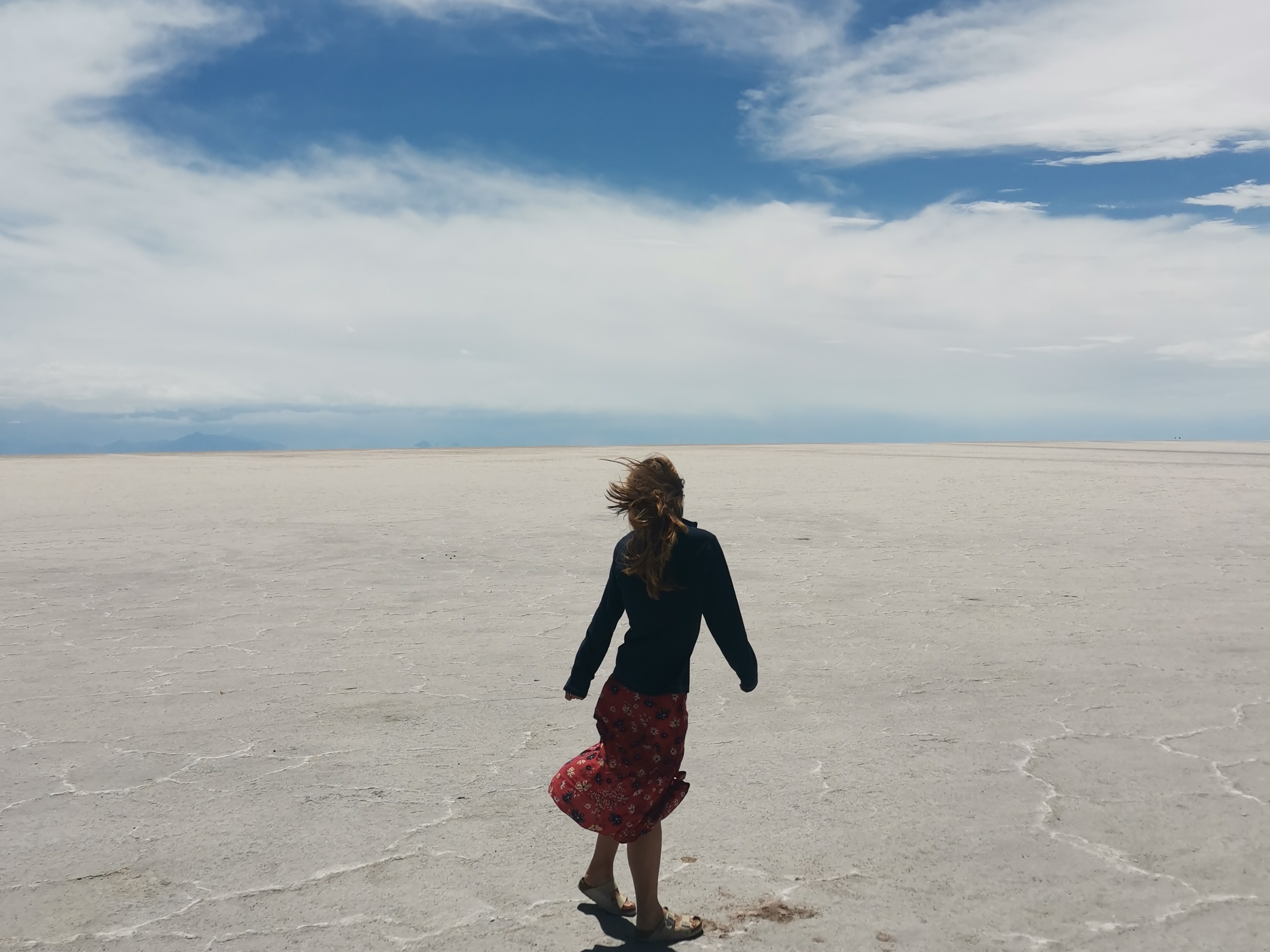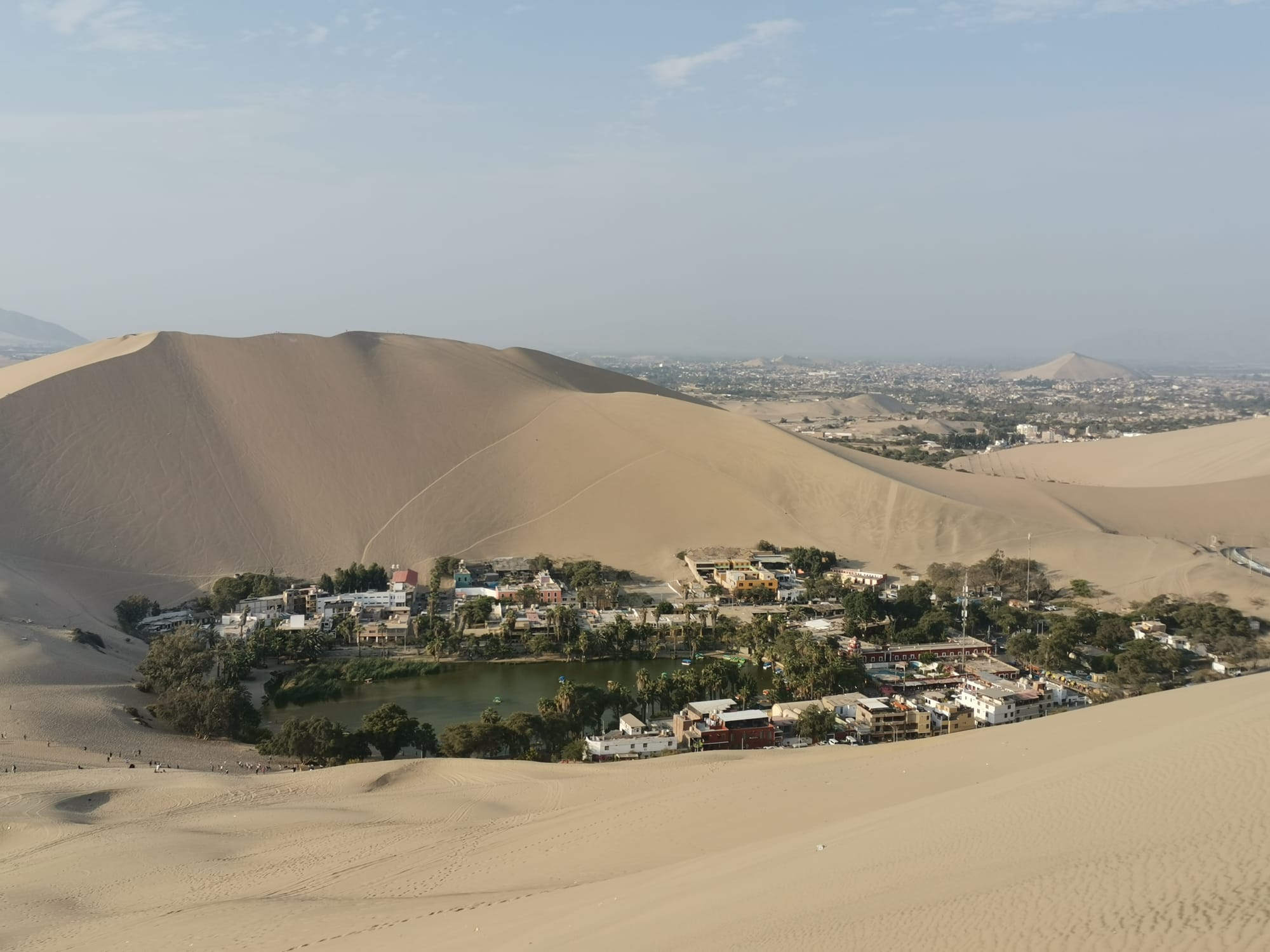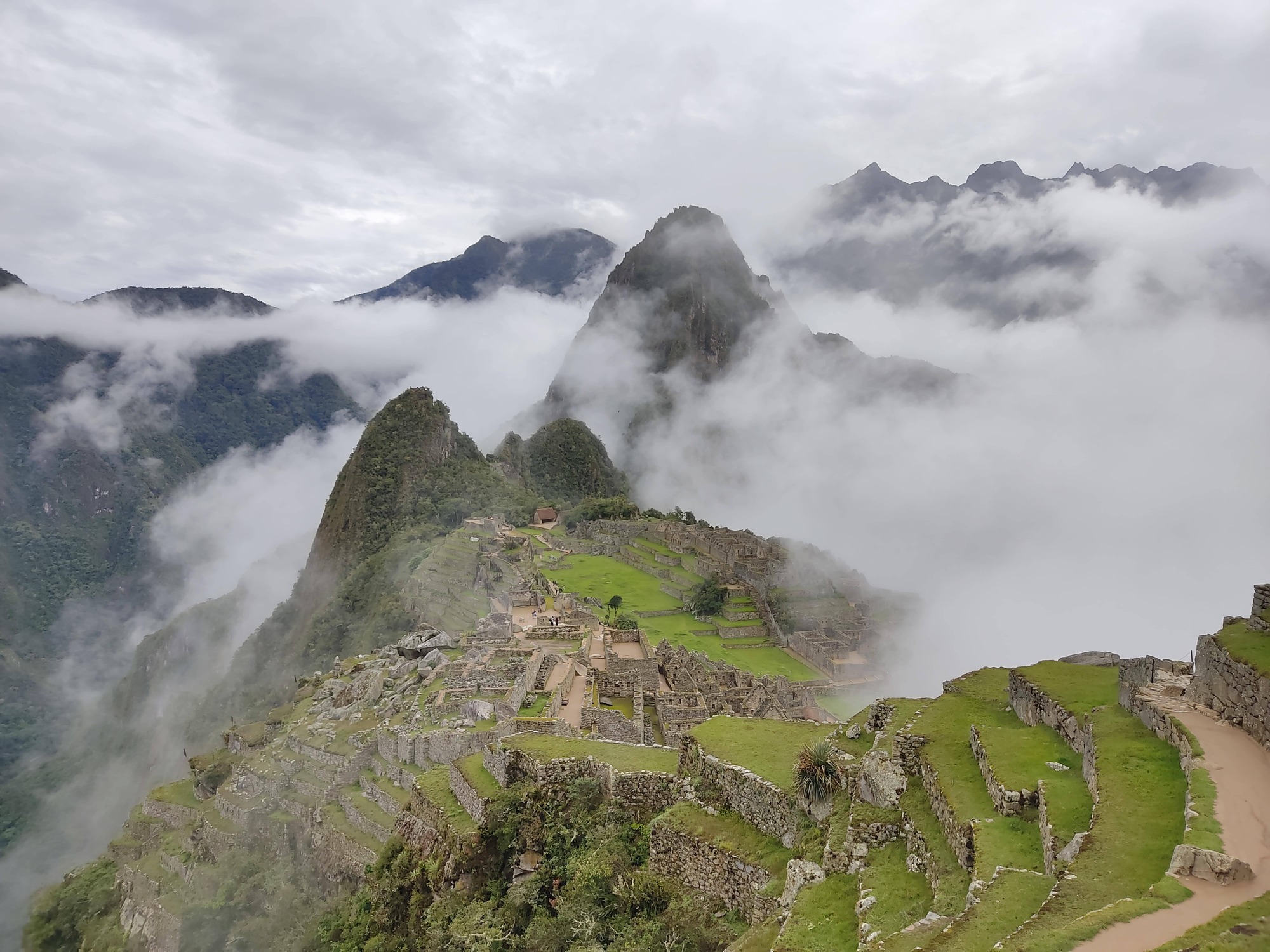Introduction
The most famous tourist attraction in Bolivia is the Salar de Uyuni, the largest salt flats in the world which sit at 3,600m above sea level. The Salar used to be a prehistoric lake, which evaporated thousands of years ago, leaving behind an unbelievably flat and barren surface in its wake. If you time your visit right, the rainfall sits on top of the smooth surface, creating a mesmerising mirror-like effect. It is easy to see why the Salar de Uyuni is such a popular attraction, and the town of Uyuni is full of travel agencies offering tours which range from day-trips to 4-days or more. It is important to note that all tours only spend one day on the salt flats, with the extra days being used to see other nearby attractions, such as lagoons and volcanoes.
Booking a Tour in Uyuni
The town of UyuniUyuni Uyuni does have a handful of things to see, mostly related with the railway, but also has a bustling market and this bright yellow clock tower by the central square. It is however, not worth the trip to Uyuni if you are not considering a salt flat tour. itself was the saddest town we visited in the whole of Bolivia. Apart from restaurants and travel agencies, the town is full of half-finished houses, wide empty streets, and a worrying amount of stray dogs (although the majority were very friendly). If you are not going to visit the salt flats, there is absolutely no reason to visit the town of Uyuni, which is a real shame since we loved every other Bolivian city we visited. It is inadvisable to visit the Salar de Uyuni by yourself, and as with every tour in Bolivia, you can get a much better deal by booking in-person rather than online, so it is likely that you will be spending at least one day in the town while you get organised for the salt flats.
Uyuni does have a handful of things to see, mostly related with the railway, but also has a bustling market and this bright yellow clock tower by the central square. It is however, not worth the trip to Uyuni if you are not considering a salt flat tour. itself was the saddest town we visited in the whole of Bolivia. Apart from restaurants and travel agencies, the town is full of half-finished houses, wide empty streets, and a worrying amount of stray dogs (although the majority were very friendly). If you are not going to visit the salt flats, there is absolutely no reason to visit the town of Uyuni, which is a real shame since we loved every other Bolivian city we visited. It is inadvisable to visit the Salar de Uyuni by yourself, and as with every tour in Bolivia, you can get a much better deal by booking in-person rather than online, so it is likely that you will be spending at least one day in the town while you get organised for the salt flats.
Most agencies offer a range of tours, from day-trips to 4-day excursions, but 2- or 3-day tours are the most popular. There are also variations of the 3-day tour that include a transfer to San Pedro de AtacamaSan Pedro de Atacama 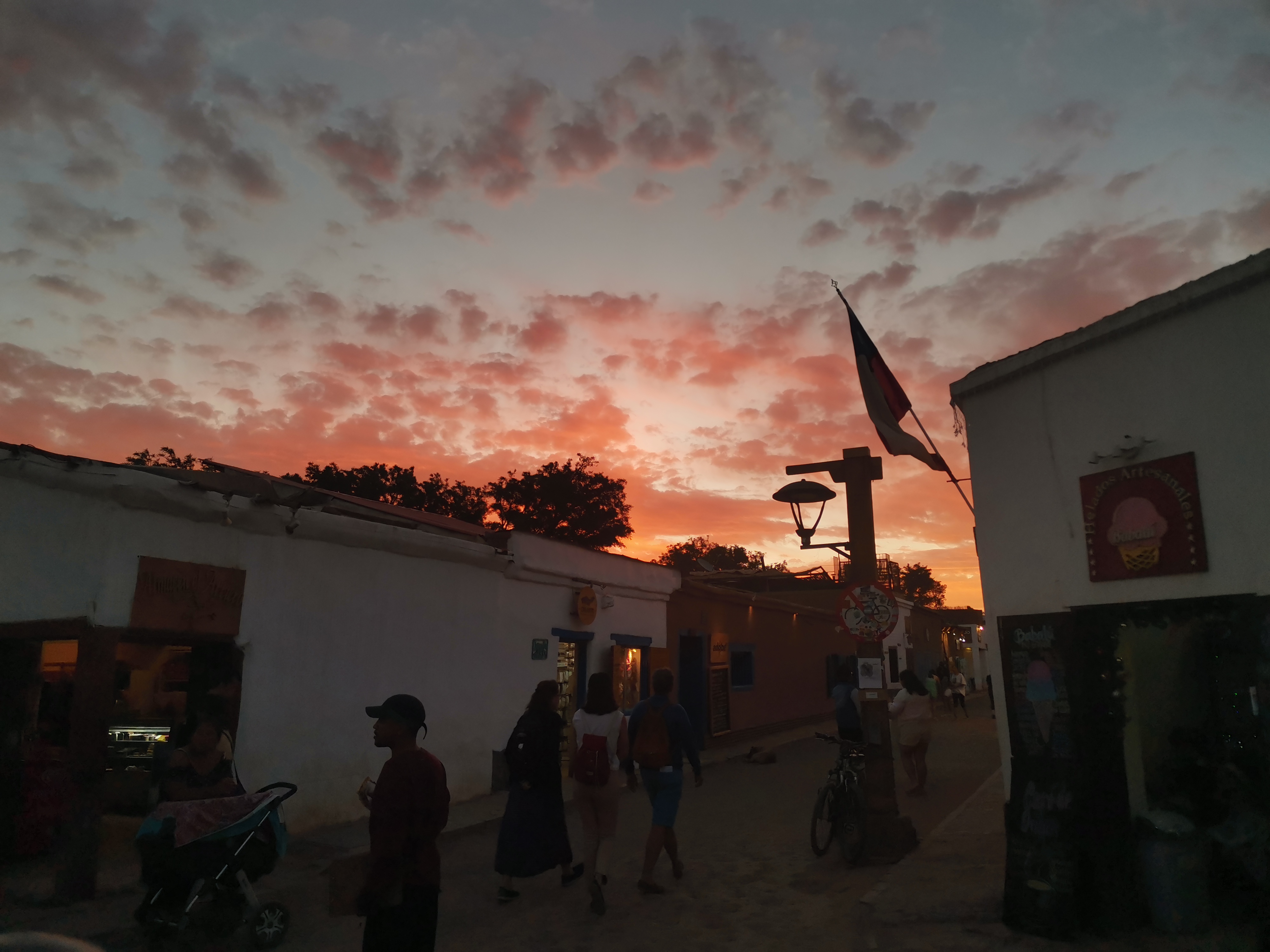 San Pedro is a small desert town in the north of Chile, which is very popular with tourists. For visitors travelling from Peru or Bolivia, it is usually the first destination in Chile, before taking a bus to the coast or a flight to Santiago., if like us, you want to continue on to Chile afterwards. It makes sense to shop around for the best price for the tour - all of the agencies use the same 4x4 cars and tour guides, so you will probably be sat in a car for 3 days with people who have paid a completely different price for the same shared experience. If you opt for an English-speaking guide, this will come with an additional cost, so we decided to preserve our budget and use the opportunity to practice our Spanish. Although some of the specialist terms went over our heads, 2 months on the road had taught us enough essentials to get by without any major language-barrier problems.
San Pedro is a small desert town in the north of Chile, which is very popular with tourists. For visitors travelling from Peru or Bolivia, it is usually the first destination in Chile, before taking a bus to the coast or a flight to Santiago., if like us, you want to continue on to Chile afterwards. It makes sense to shop around for the best price for the tour - all of the agencies use the same 4x4 cars and tour guides, so you will probably be sat in a car for 3 days with people who have paid a completely different price for the same shared experience. If you opt for an English-speaking guide, this will come with an additional cost, so we decided to preserve our budget and use the opportunity to practice our Spanish. Although some of the specialist terms went over our heads, 2 months on the road had taught us enough essentials to get by without any major language-barrier problems.
All tours should include accommodation and all meals during the tour (the quality of which may vary based on the price of the tour). They will also include a qualified driver, who will take the group around the sights in a 4x4 - the roads are extremely bumpy at best, and non-existent at worst, so it is not recommeneded to attempt to drive through the salt flats by yourself.
Day 1
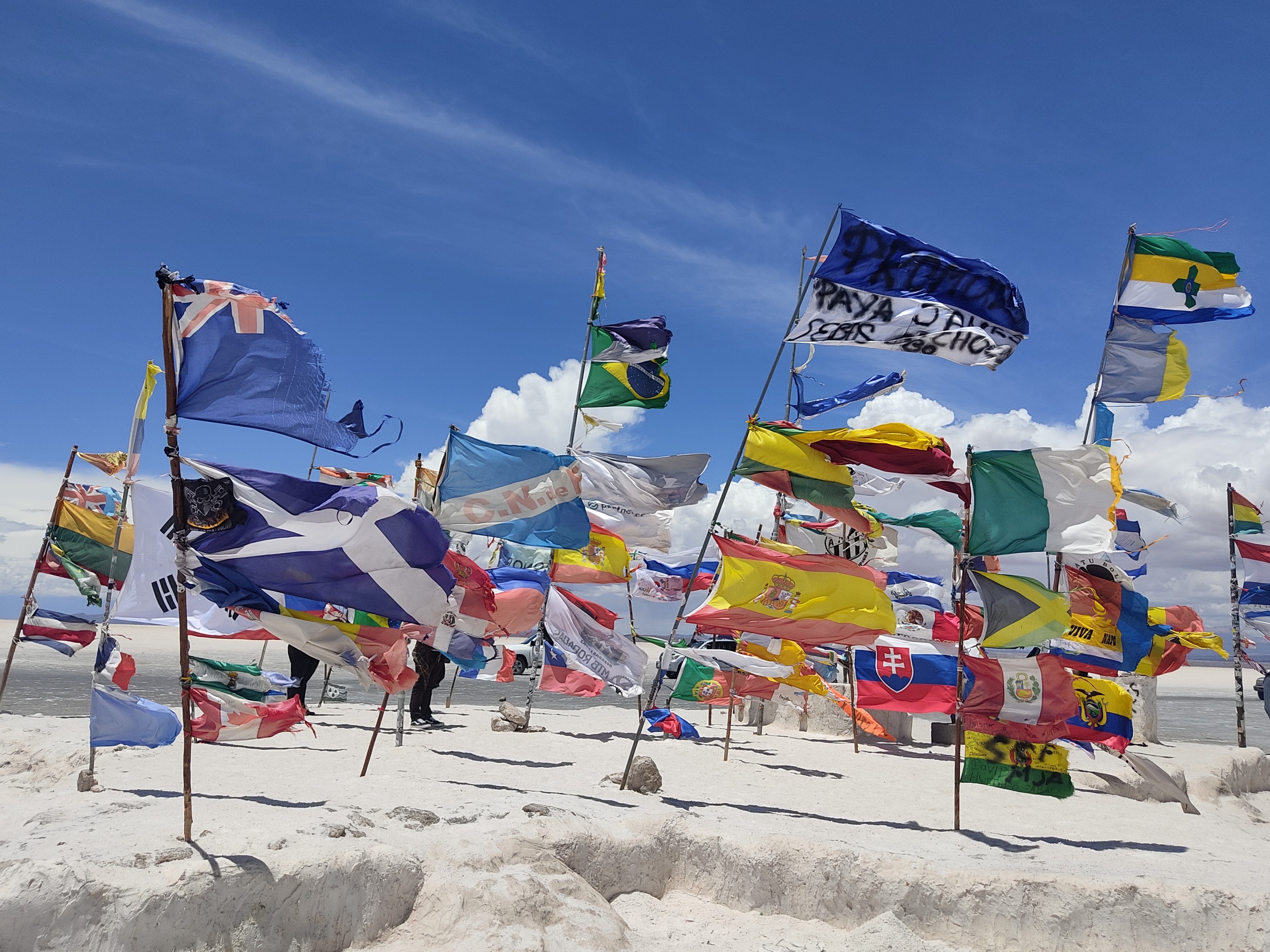
Train Cemetery
The first stop on every Salar de Uyuni tour is the cementerio de trenes ('train cemetery'). Here, a huge collection of rusty old locomotives sit abandoned in the desert (Uyuni was once a transport hub to export minerals to the Pacific, but when the country lost its access to the coast in the Pacific war, there was no longer any use for the rail system, so it fell into disrepair). The salty desert winds have not been kind to the huge metallic bodies, which have eroded and crumbled over time. The site is completely free to access and there are no barriers or cordons, so you can climb up the rusty ladders and explore the carriages and engine-rooms, imagining what it would have been like to ride these trains when they were still functional.
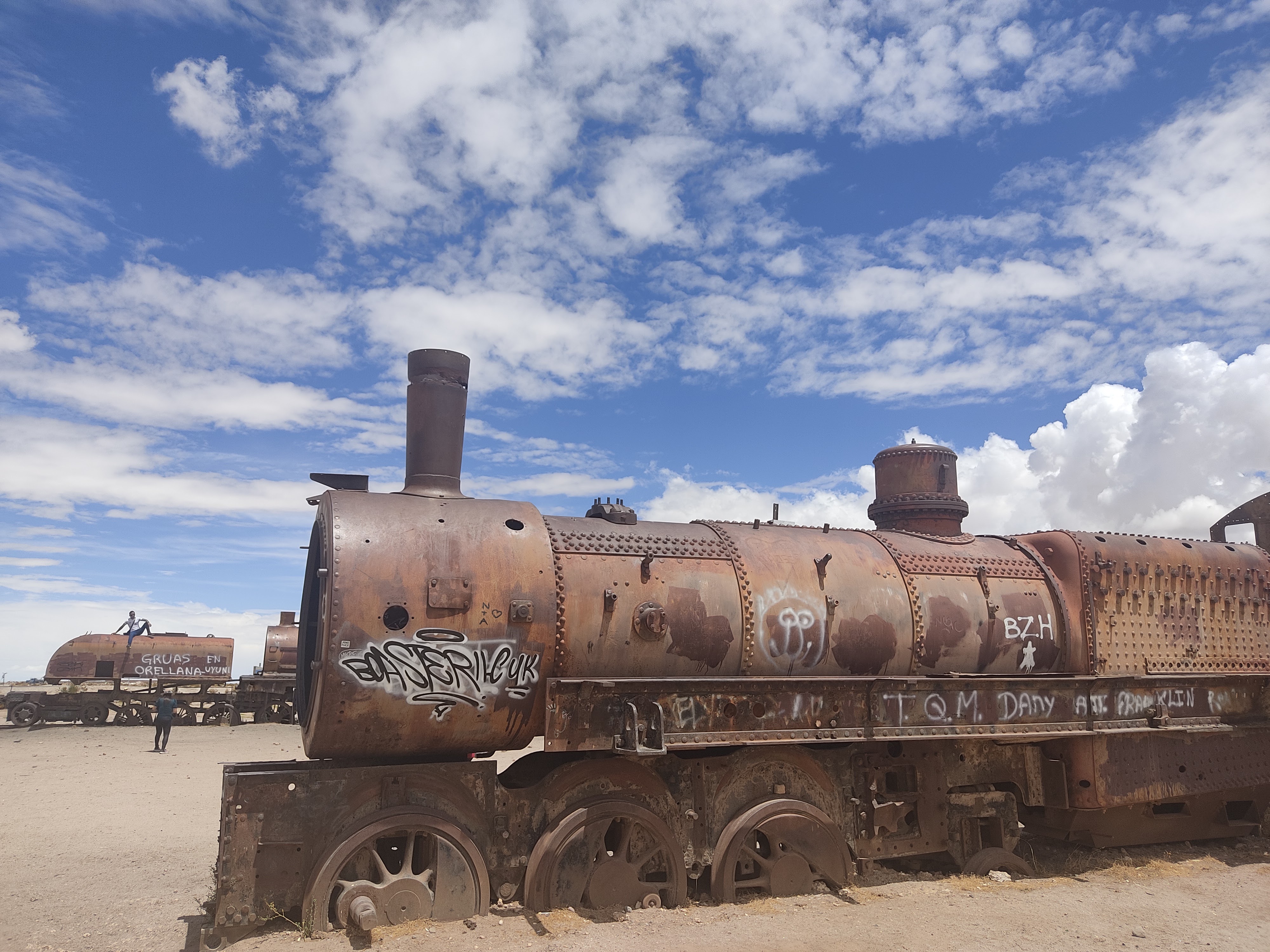

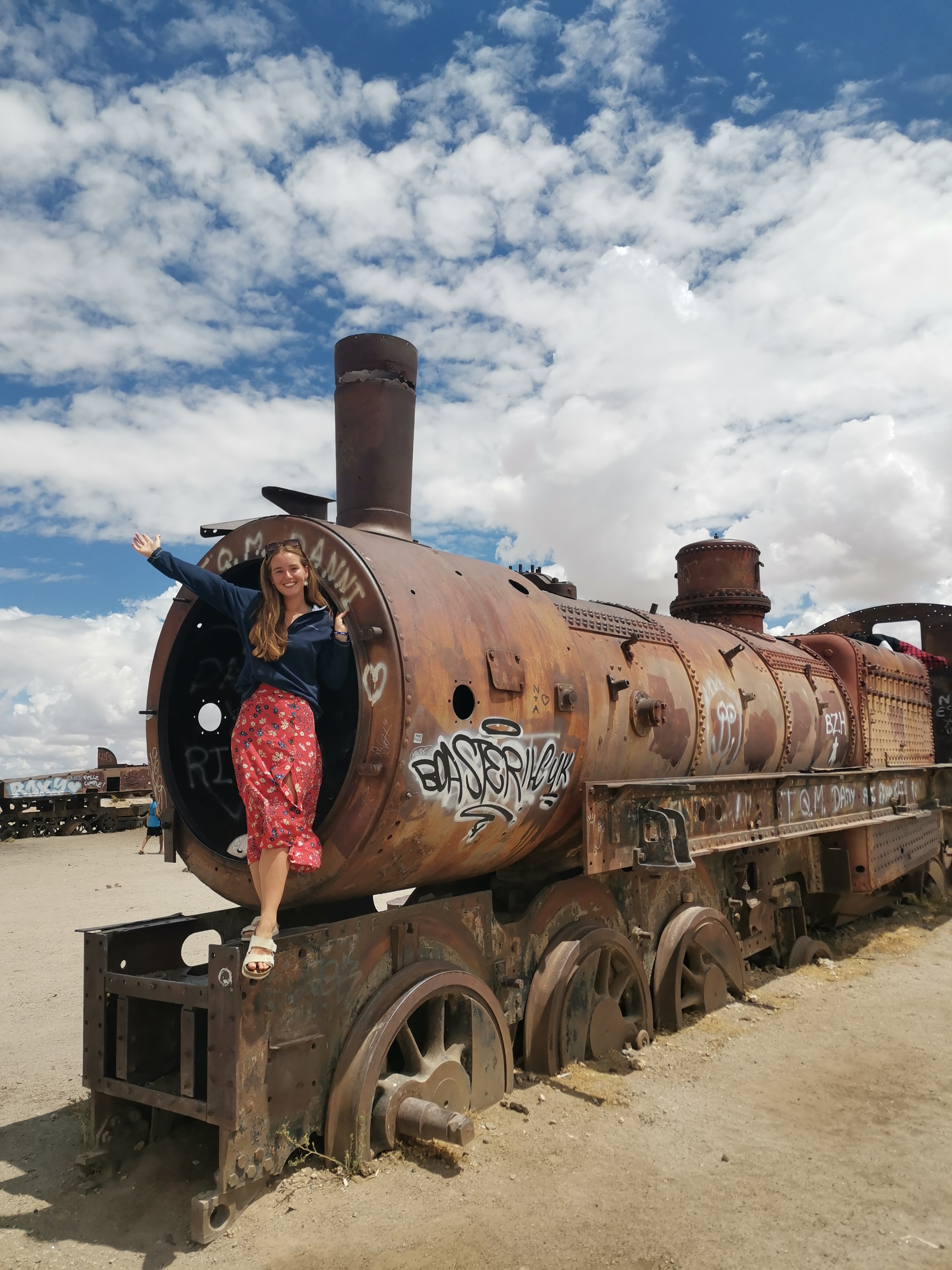
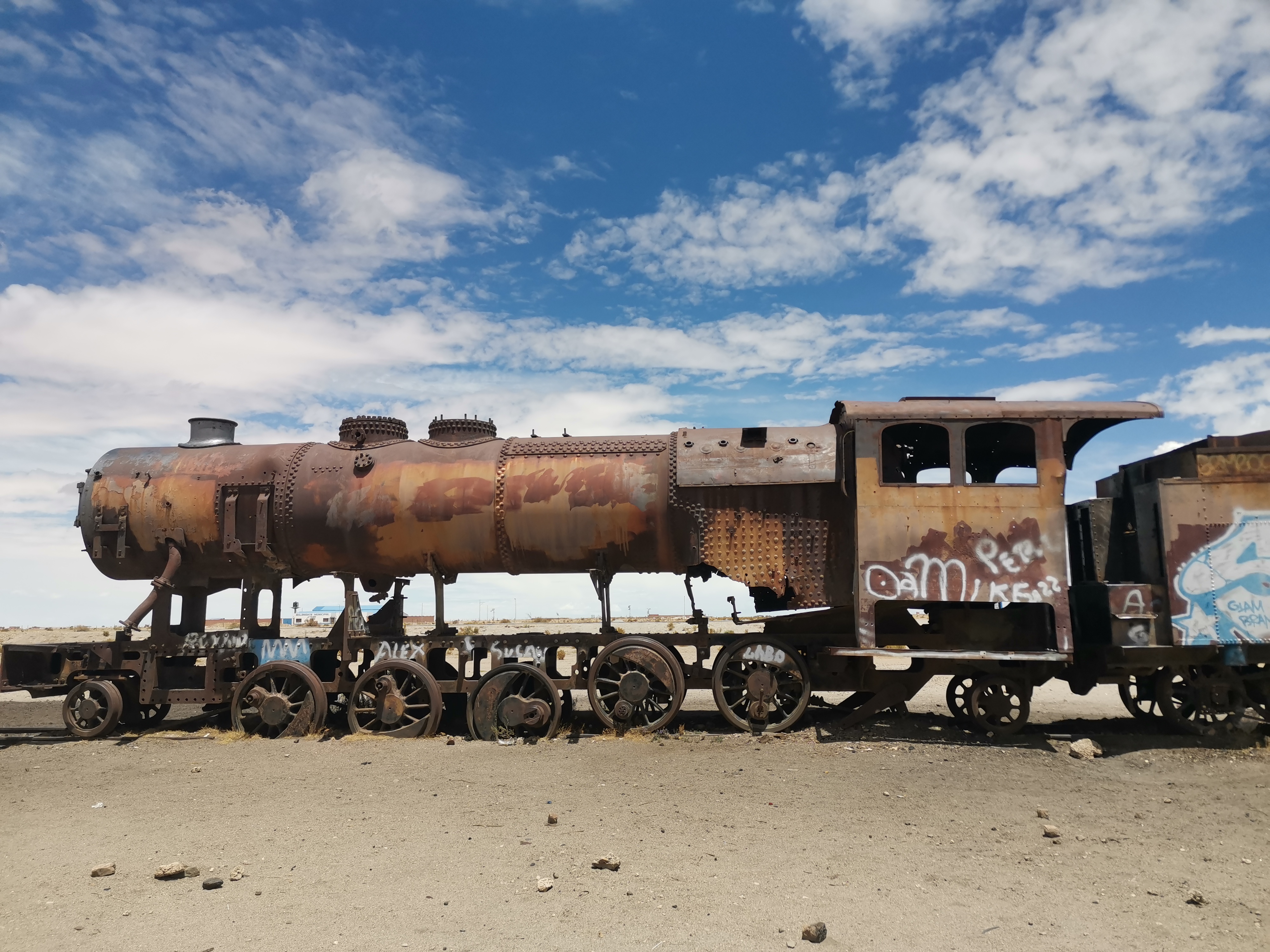
The train cemetery was a very interesting place to explore, and your guide will give you some information on the background of these trains. However, it is worth noting that every single Uyuni tour stops off here at around 11am. That's a lot of cars, full of a lot of tourists, all at once, slightly dampening the atmosphere. Fortunately, there is an alternative, as the train cemetery lies just on the outskirts of the town and is easy to reach via a 45-minute stroll (perfect if you have time to kill before your tour starts). We braved a 4:45am start to get to the cemetery at sunrise, where we had the whole site to ourselves. We clambered up onto the cold steel rooftops and enjoyed the scene in the dim light of dawn. The entire place was cold, silent, and eerie - exactly how a train cemetery should feel, rather than the touristy Instagram photo shoot it felt like when we returned later on our tour. As the sun rose, the light slowly changed and revealed more of the trains, still without another soul in sight. The train cemetery was an awesome and peaceful place, and absolutely worth the painfully-early alarm.
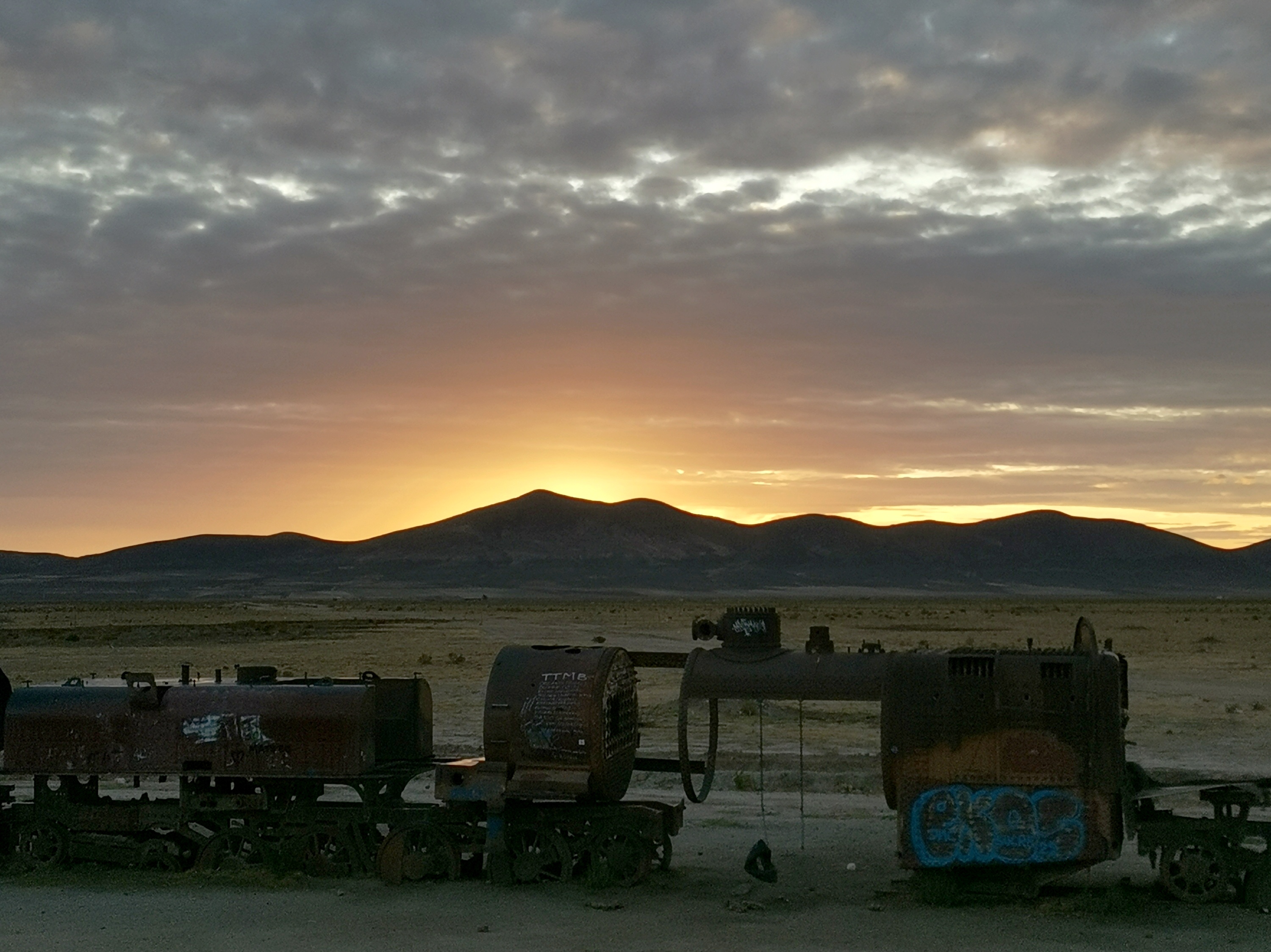

Salar de Uyuni
At around midday on the first day of the tour you will reach the main attraction - the salt flats themselves. Although the name is pretty self-explanatory, we were taken back by just how flat and endless the landscape was. After seeing mountains, jungles, and canyons across the rest of the country, this bizarre landscape felt like a glitch in the matrix. The salt flats cover an area of over 10,000 km2, and no matter how hard you look, there is nothing but the repeating honeycomb patterns of hard white salt extending forever in all directions. Any signs of life are hidden well beyond the horizon, making the salt flats feel like an alien world.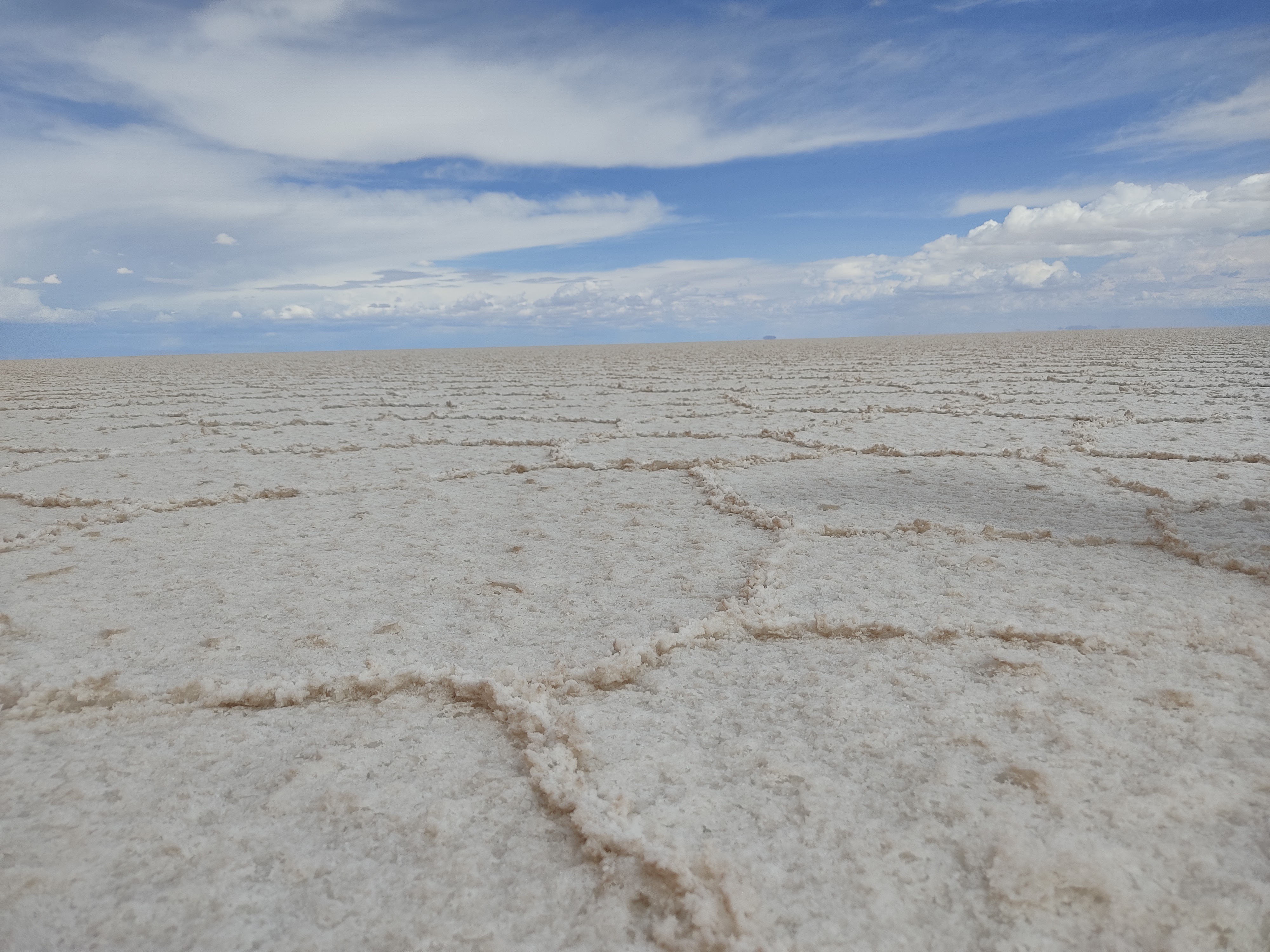
In the Salar de Uyuni, the salt is inescapable. The restaurant where we stopped for a buffet lunch was made out of salt. The walls, tables, and chairs were all solid white lumps of salt, and the atrium featured many salt-sculptures. The hotel where we spent the night was similar, with the walls and ceilings all constructed out of salt.
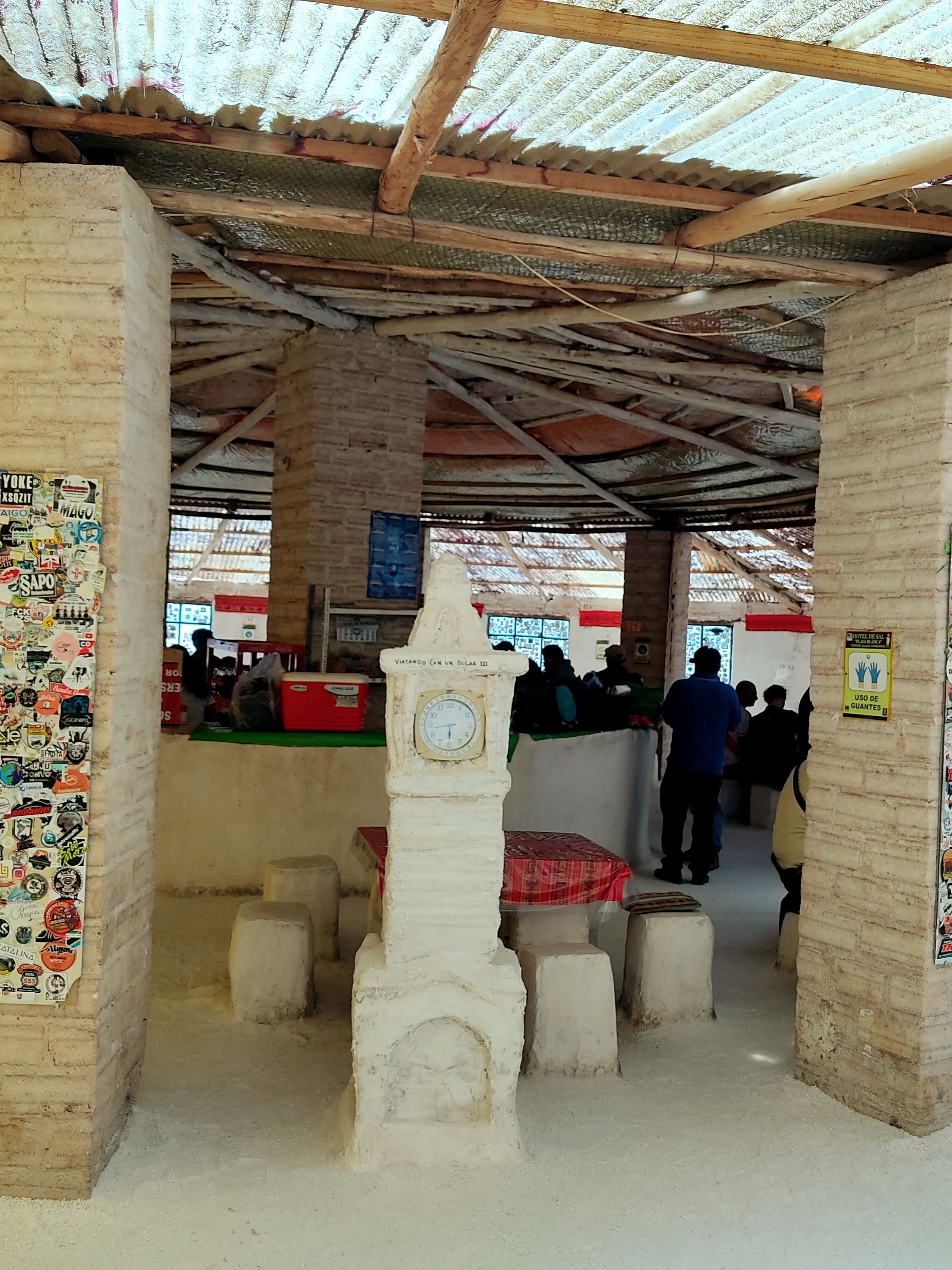
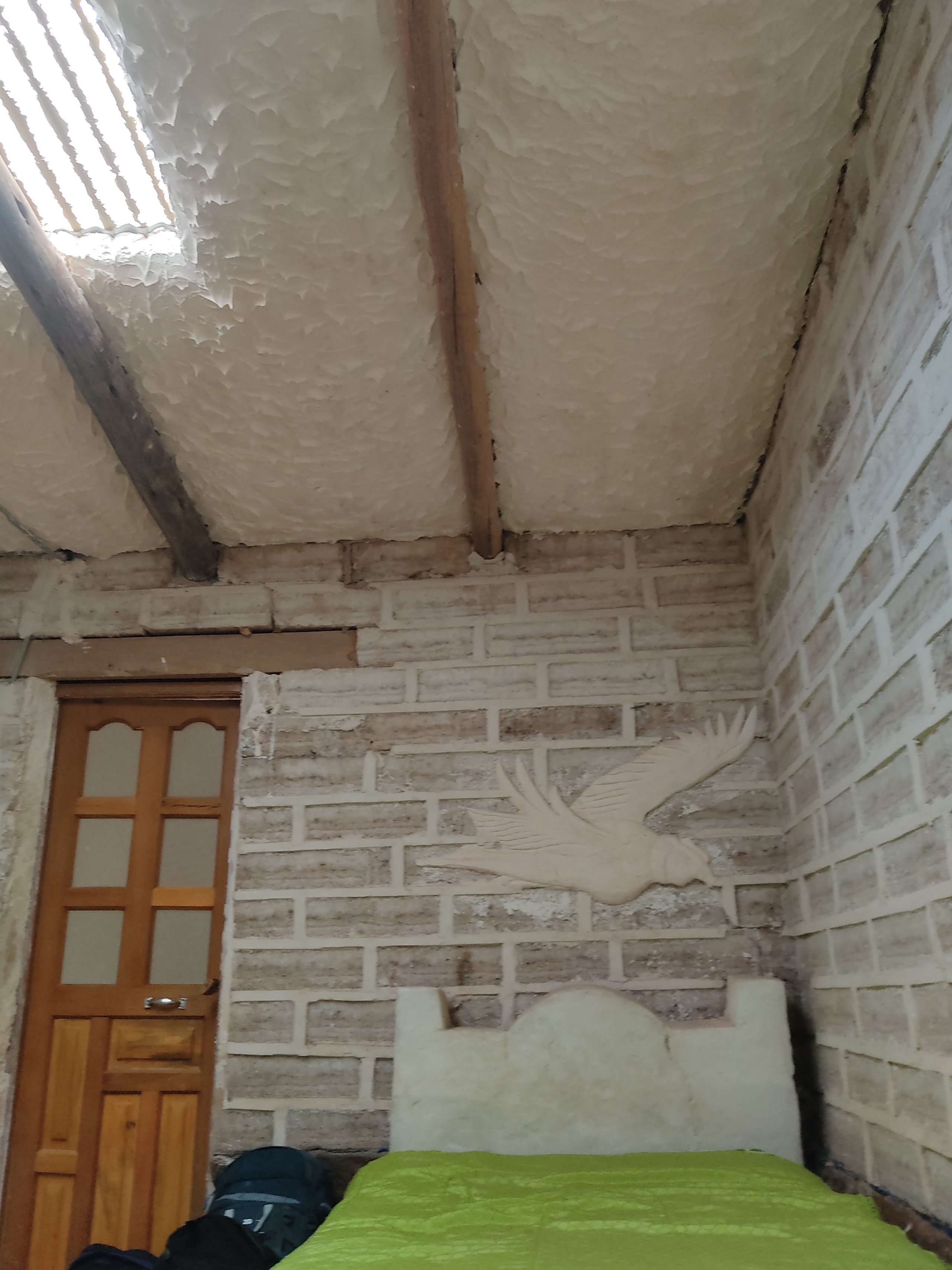
It's impossible to visit the salt flats and not take some of the cheesy photos you see all over the internet. The endless flat landscapes are ideal for creating illusions of perspective, since there is quite literally nothing around to see to get your bearings. While posing for the photos can seem rather sillyBehind the scenes
 Creating the perfect photo was tricky, and would have looked ridiculous if anyone else had been around., it was a fun challenge to try and line all the shots up and get creative with our ideas. Although you can pay for professional photographers to help you, we took the DIY approach, which definitely produced worse results, but was much more entertaining.
Creating the perfect photo was tricky, and would have looked ridiculous if anyone else had been around., it was a fun challenge to try and line all the shots up and get creative with our ideas. Although you can pay for professional photographers to help you, we took the DIY approach, which definitely produced worse results, but was much more entertaining.
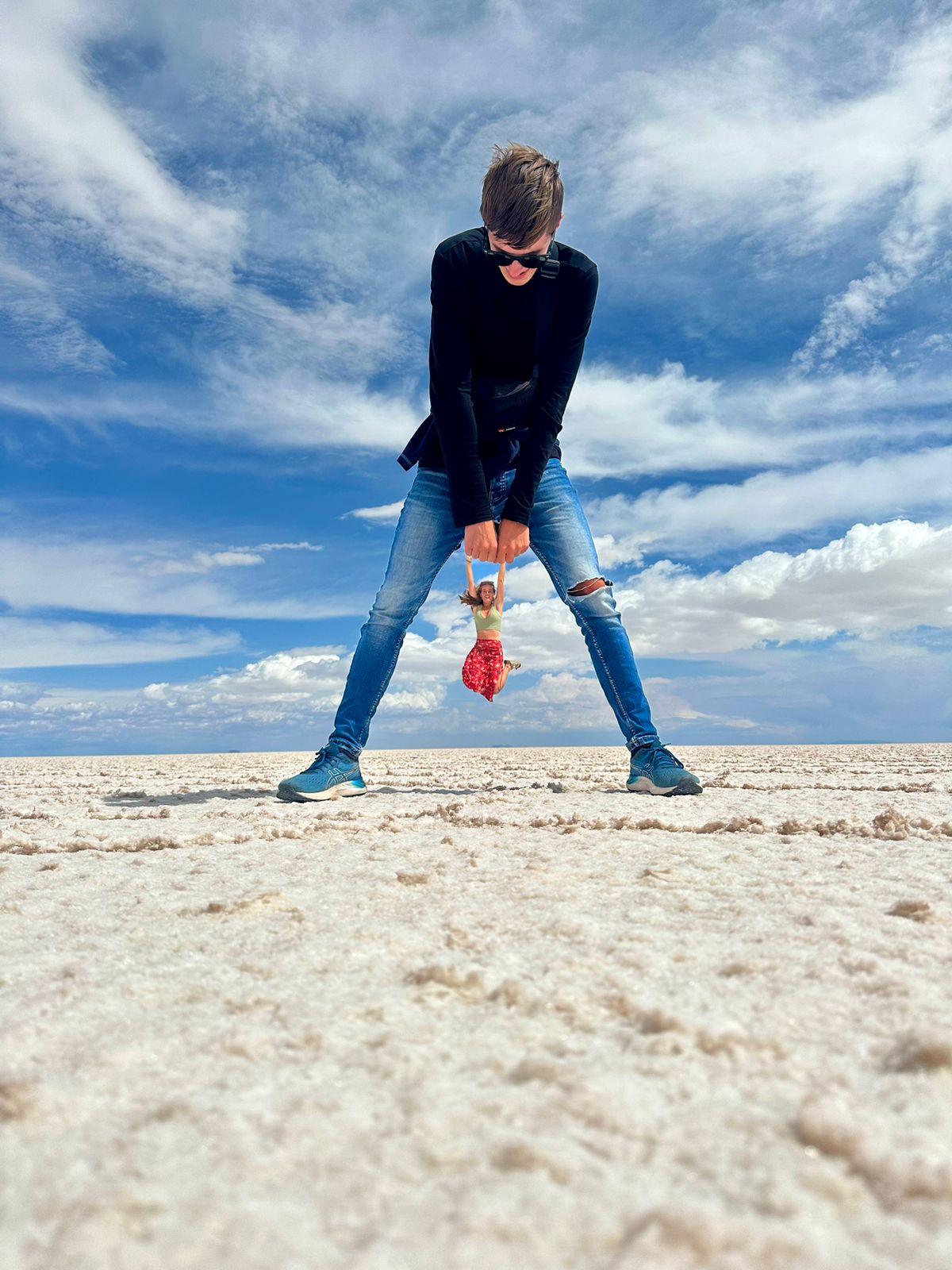
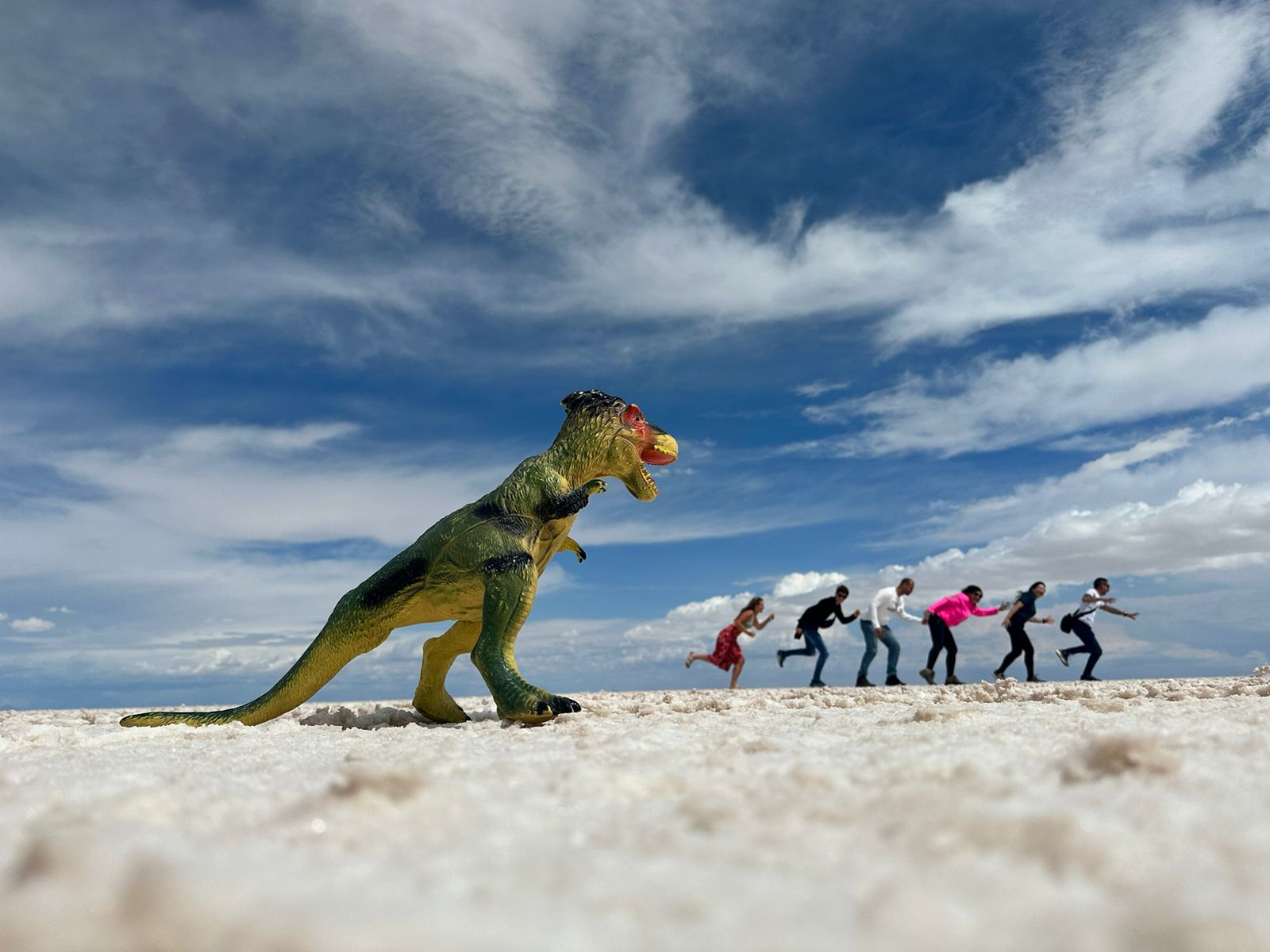
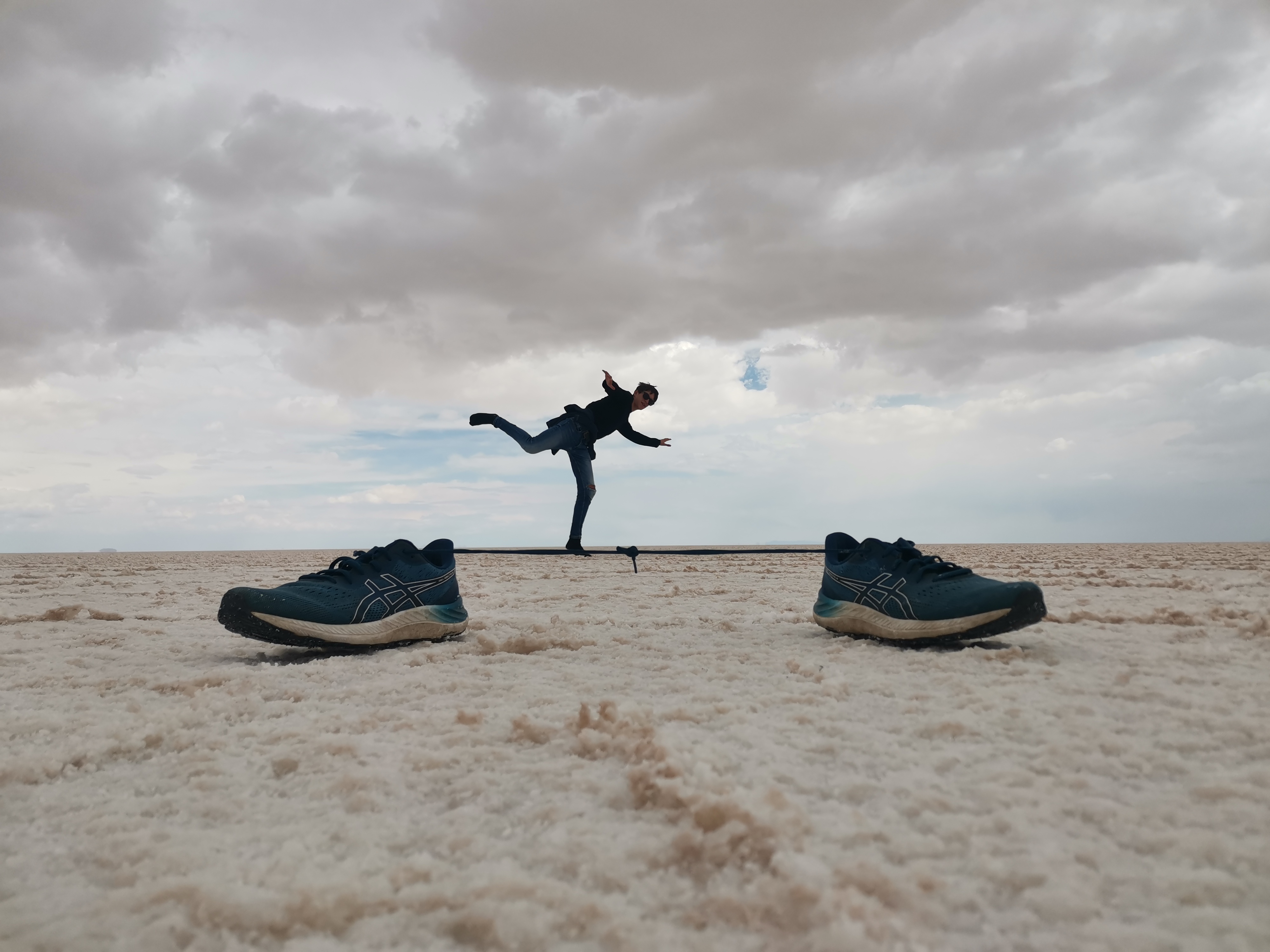

Speckled throughout the mesmerising landscape, there are a few specific attractions and landmarks, although we honestly have no idea how the guides manage to navigate to these relatively small spots within the enormous expanse of salt. Isla Incahuasi ('island of the house of the Inca' in Quechua), which used to be a volcanic island rising out of the water when the salt flats were still covered by a lake, is a popular stop on the tours. The fertile rock has enabled life to thrive in the arid and hostile environment, with thousands of cacti reaching heights of 10m covering the island's surface. A short hike around the island, which weaves in and out of the forest of cacti, provides an excellent view over the salt flats. Although the idea of an in-land 'island'An in-land island
 The shape of the island, with its bays and cliffs, is highly deceptive, making the salt appear like a white lake, until you stand on it yourself. is hard to wrap your head around, and the topography provides the illusion of the island being surrounded by water, rather than the salt.
The shape of the island, with its bays and cliffs, is highly deceptive, making the salt appear like a white lake, until you stand on it yourself. is hard to wrap your head around, and the topography provides the illusion of the island being surrounded by water, rather than the salt.
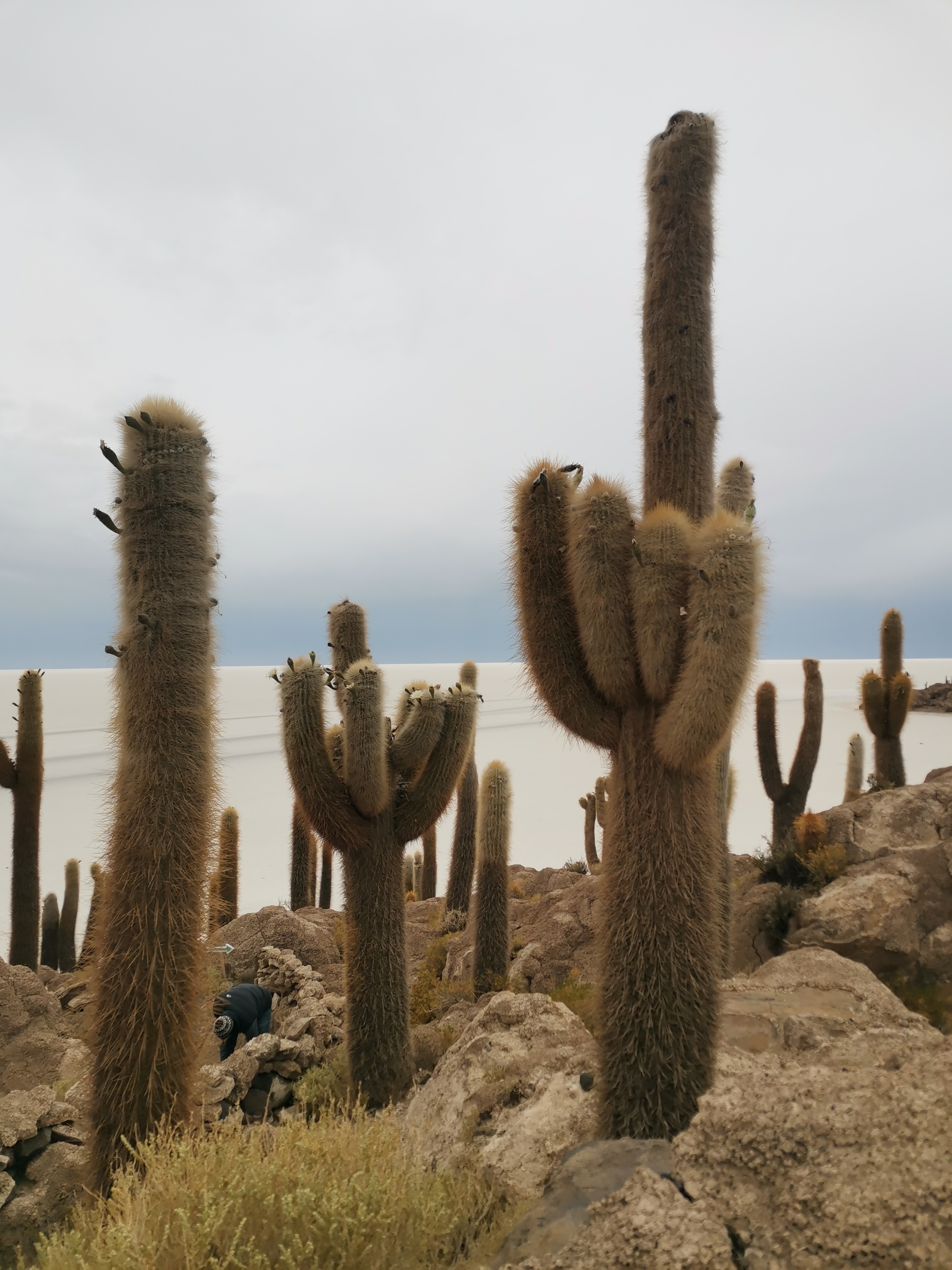

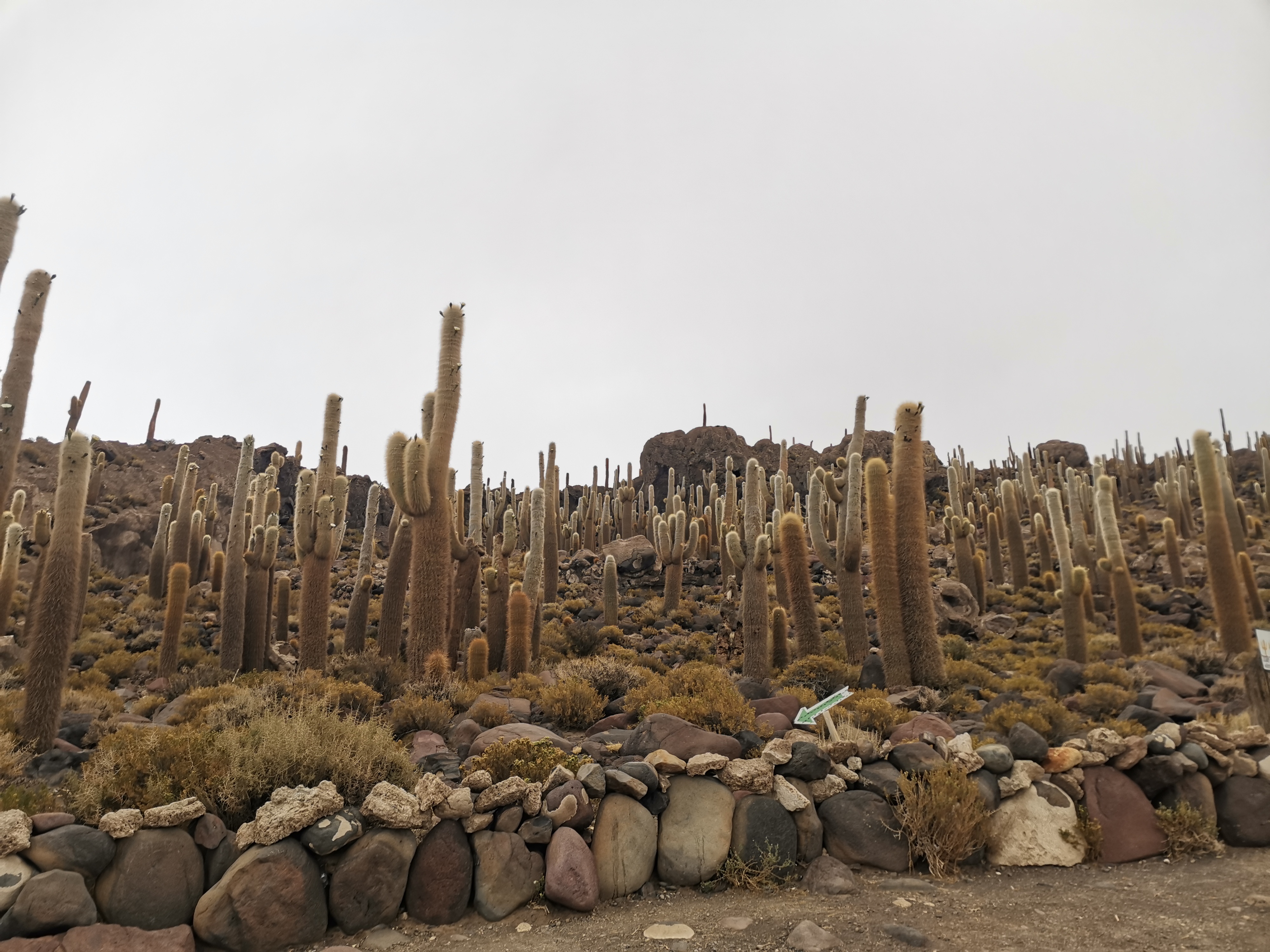

To end our first day in the salt flats, we drove towards the mountains that mark the boundary of the Salar de Uyuni, and waited for the sun to go down. Although it was now chilly and cloudy, with the sky blending in seemlessly with the grey salt below, we were rewarded with a beautiful sunset, the sky suddenly turned bright orange, providing a brief but vibrant display.
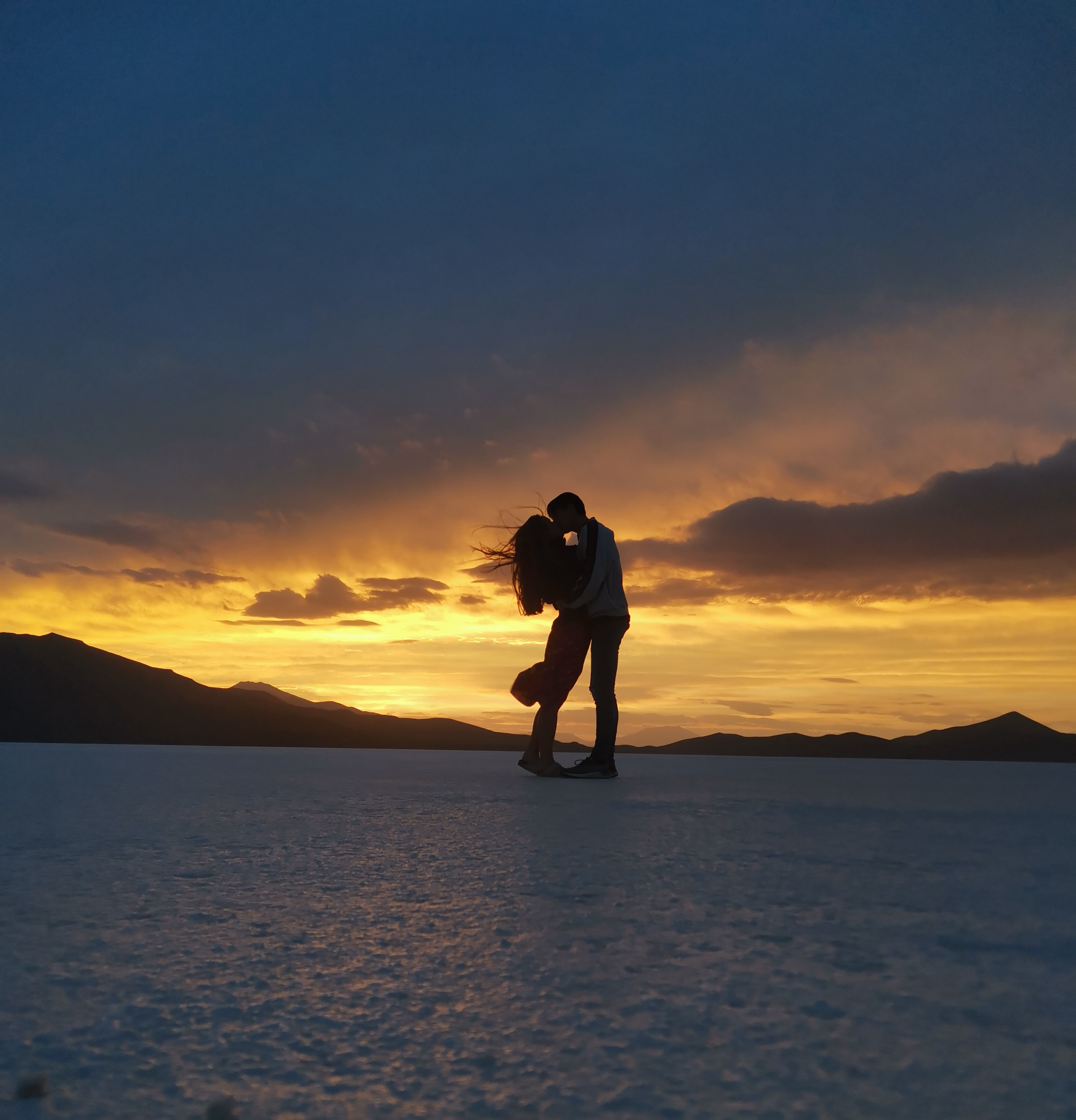

Day 2
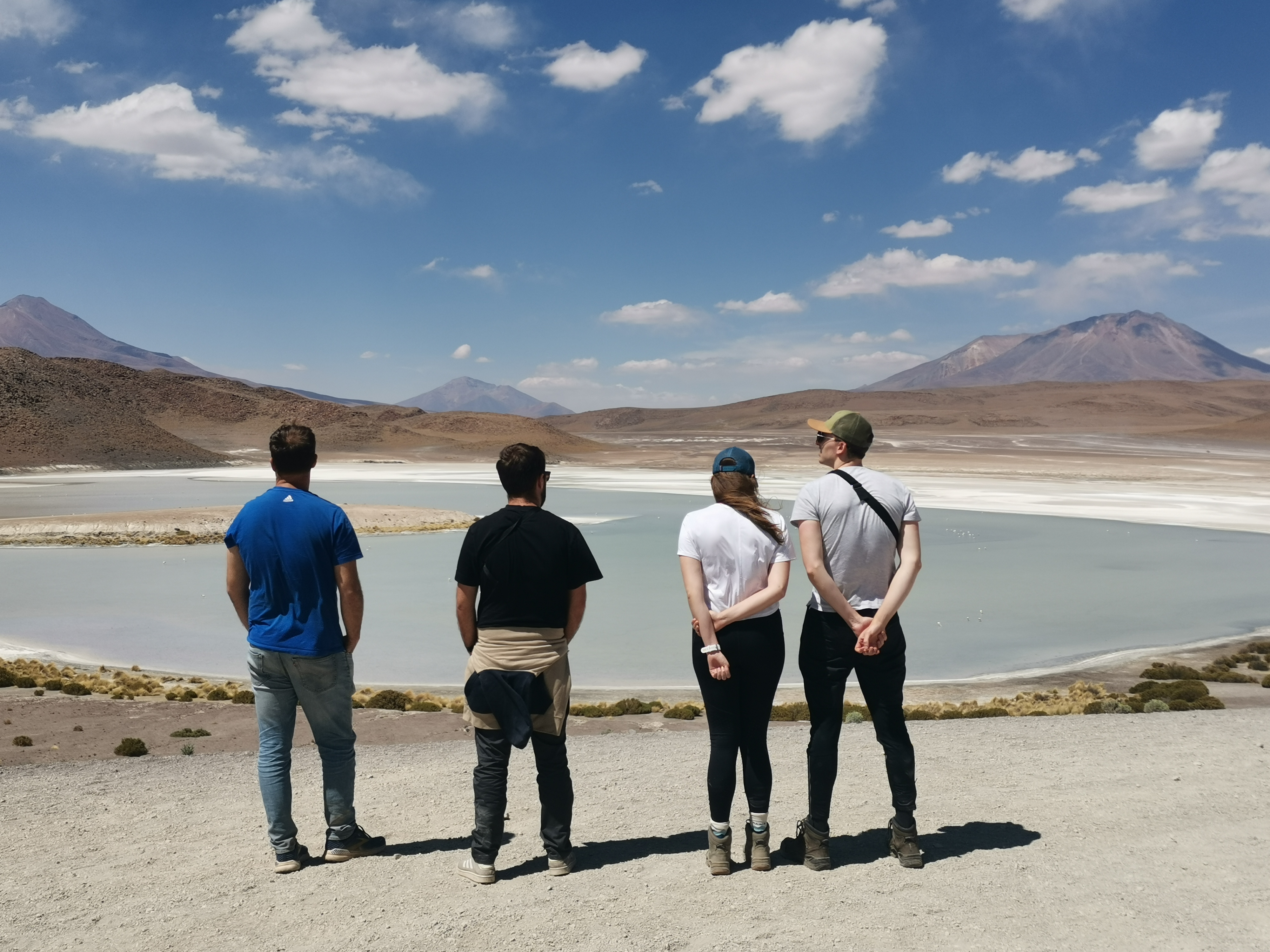
Landscapes
It is important to note that the tours only remain within the salt flats for the first dayTherefore, booking a longer tour doesn't actually mean you get more time to enjoy the salt flats, but it does mean you can visit a lot more of the attractions that lie further afield. The second day of our tour was spent driving around the surrounding deserts in the extreme South-West corner of Bolivia, visiting jagged canyons and enjoying the views of distant volcanoes, some of which lie over the Chilean border and were gently puffing out streams of white gas on the horizon. One of the most iconic sights of the tour is the arbol de piedra or 'stone tree'. This surreal rock has a rather self-explanatory name, and its bizarre shape was formed by years of strong wind and erosion (as you no doubt will figure outThe moment you step out of the 4x4, you will empathise with the arbol de piedra, as the strong and relentless winds that howl over the flat desert bombard you. We could barely hear eachother unless we were shouting, and after a while we had to seek refuge in the 4x4 as there was no escaping the harsh winds. Even then, it took all of our strength to pull the door open against the prevailing winds.).
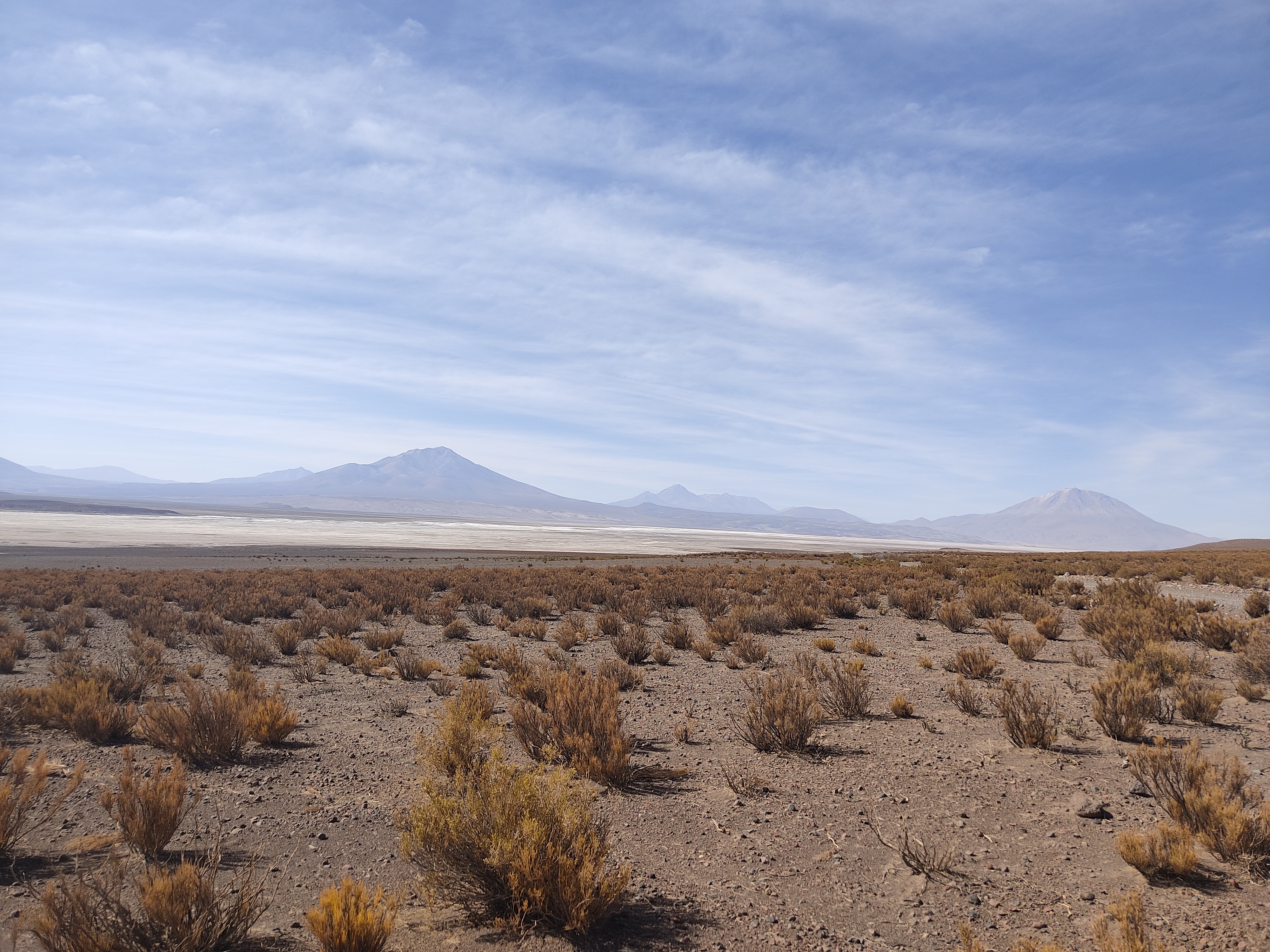
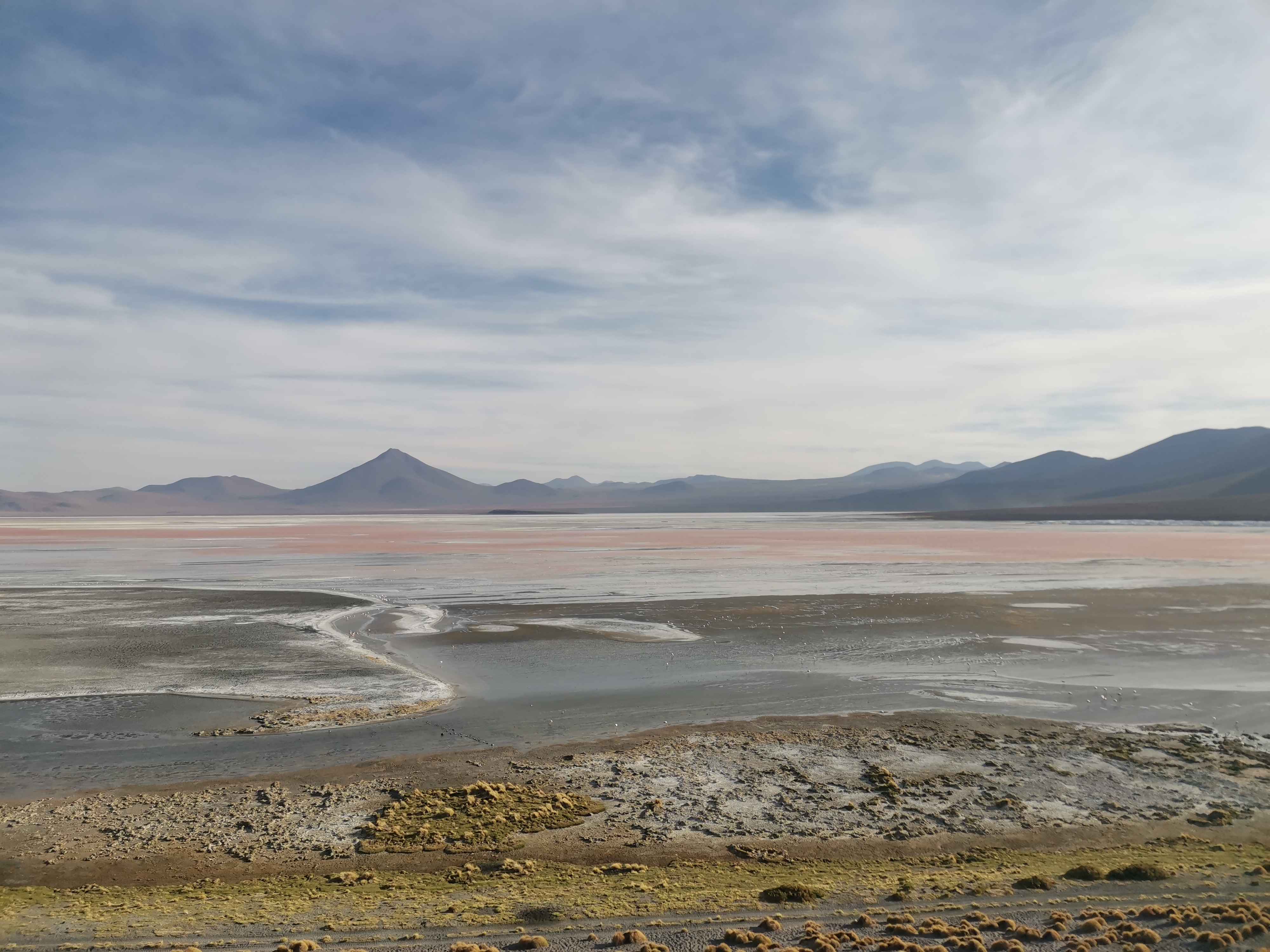
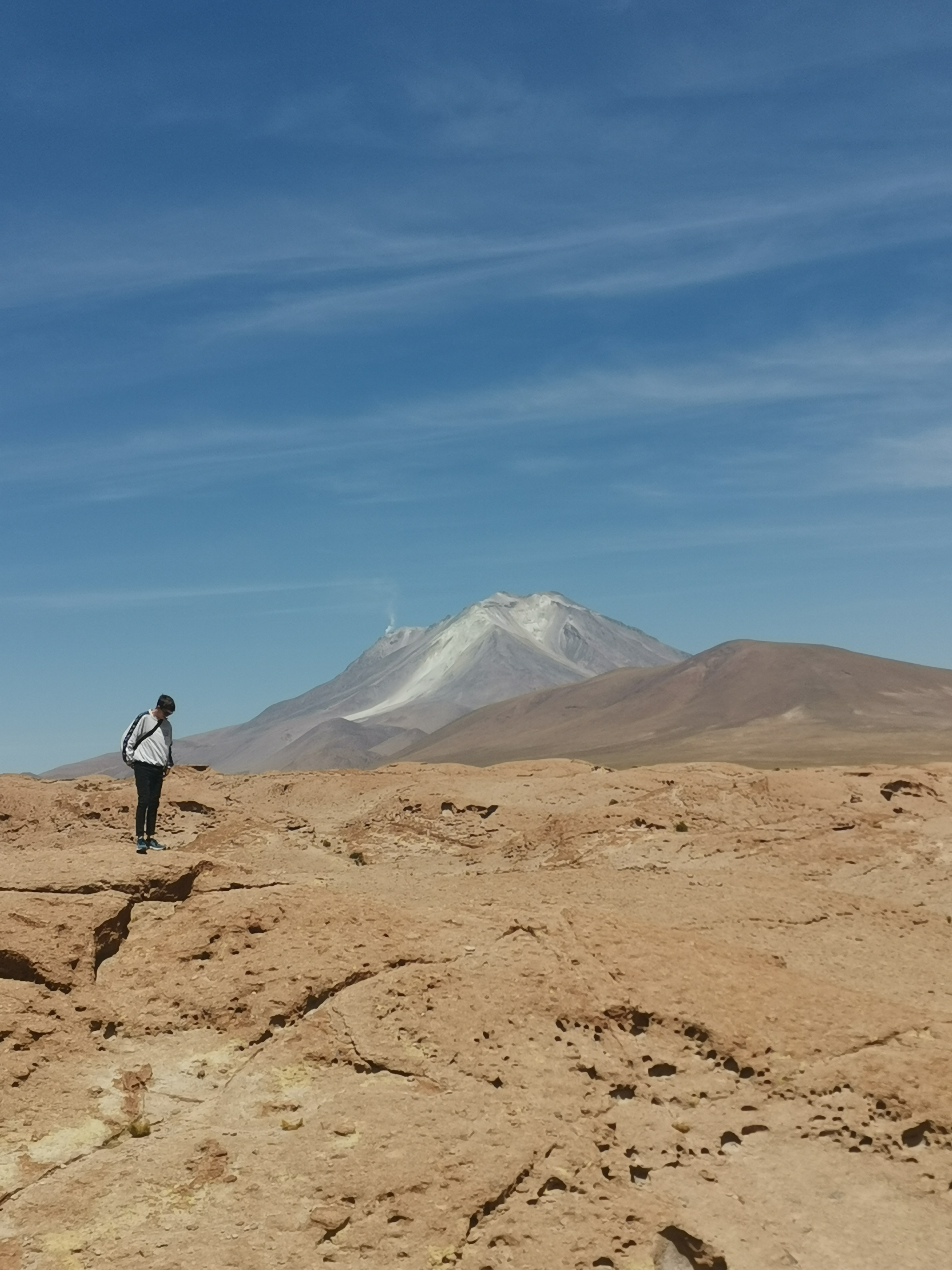
These impressive sights are few and far between, with the desert mostly consisting of barren wasteland. The drives between destinations took many hours, but luckily most of the drivers will blast some tunes to pass the time. The second day started early and finished late, and by the end we were growing sick of the sight of endless sand. However, between the dry and dusty landscapes, the route also passes huge lagoons of blue, green, and even red waters, dyed by the minerals present in the desert soil - natural oases providing a sanctuary for life to survive in the desert. We stopped at each lagoon to enjoy the views, and more importantly to stretch our legs and go for a stroll, before squeezing back into the 4x4 for the next long drive. We ended up losing track of exactly how many lagoons we visited, because they had all started to blur into one after the first few.
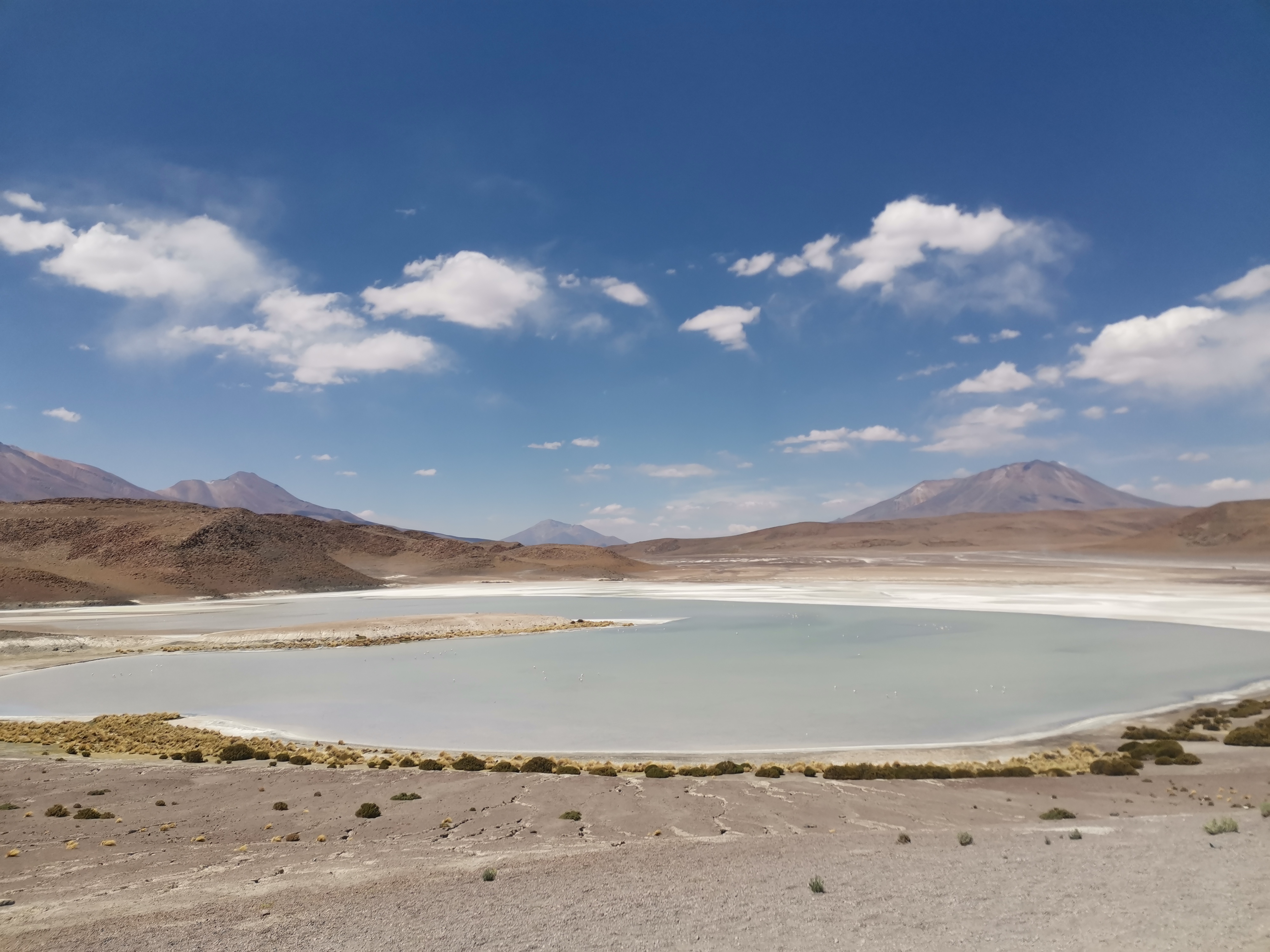
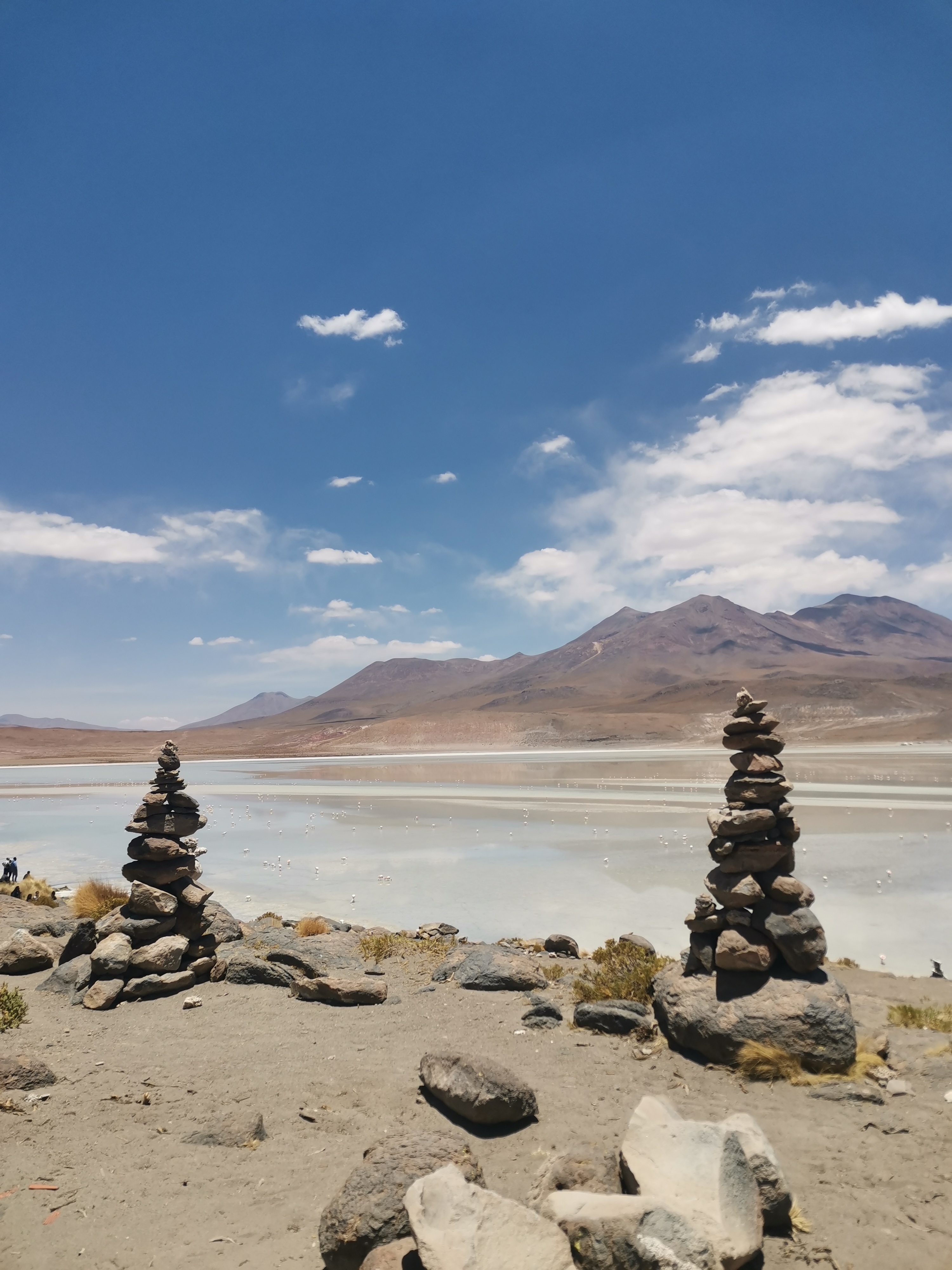
Wildlife
Although hostile, the desert provides a refuge for some endangered Andean species, especially in the area of the Reserva Nacional de Fauna Andina Eduardo Avaroa, which includes Laguna Colorada. Thousands of flamingos, from three different species, flock to the desert lagoons, including the threatened James flamingo, and wade through the shallow waters in search of food. From afar, the birds appear as countless pink spots covering the lake's surface. Some of the lagoons had short paths around the banks, where you can get a close-up view of the birds peacefully wading through the bog. The lagoons are rich in minerals, predominantly borax, which produce various different colourations and provide nutrients for microorganisms and algae to grow, which in turn attracts the flamingos.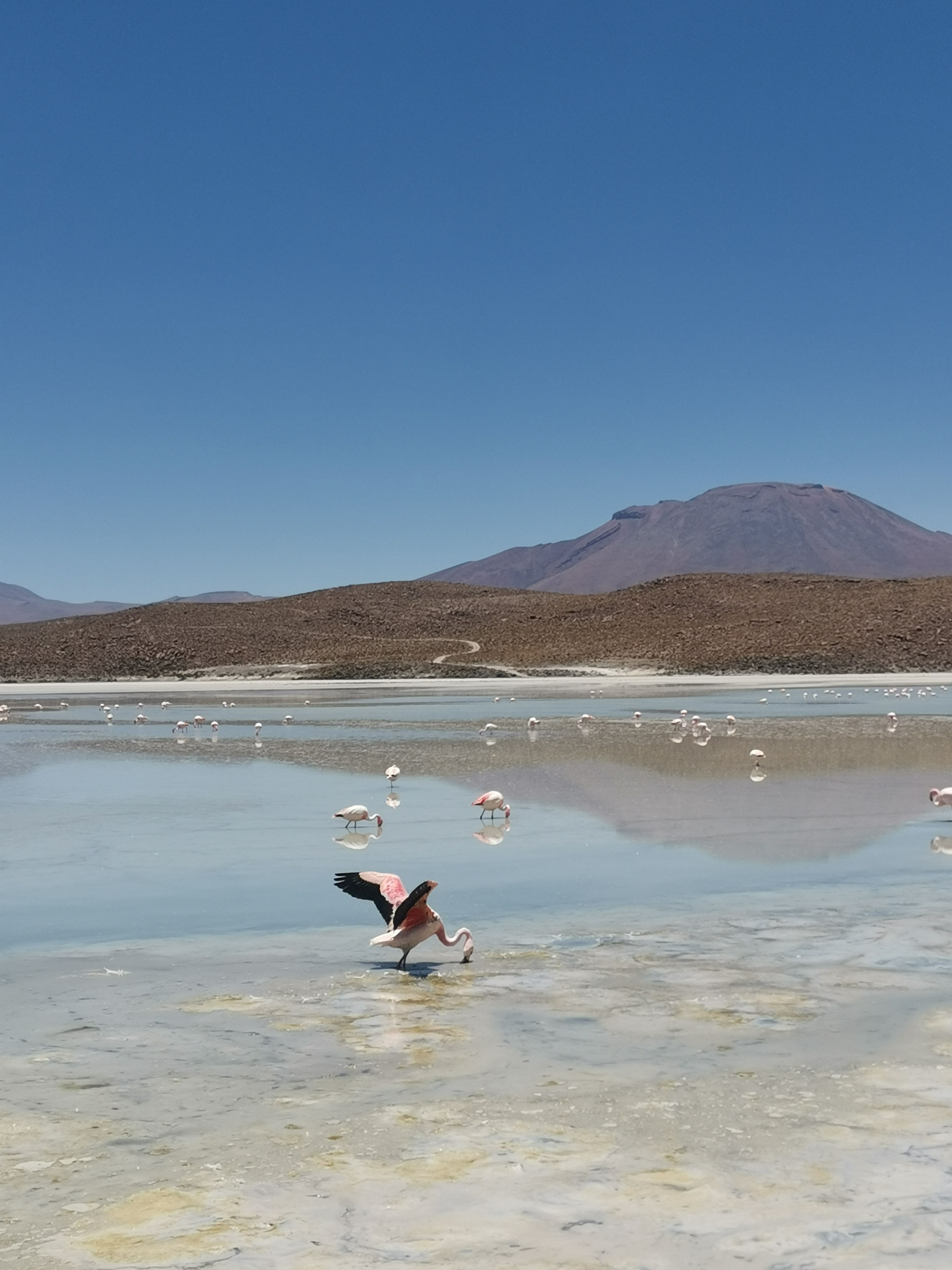
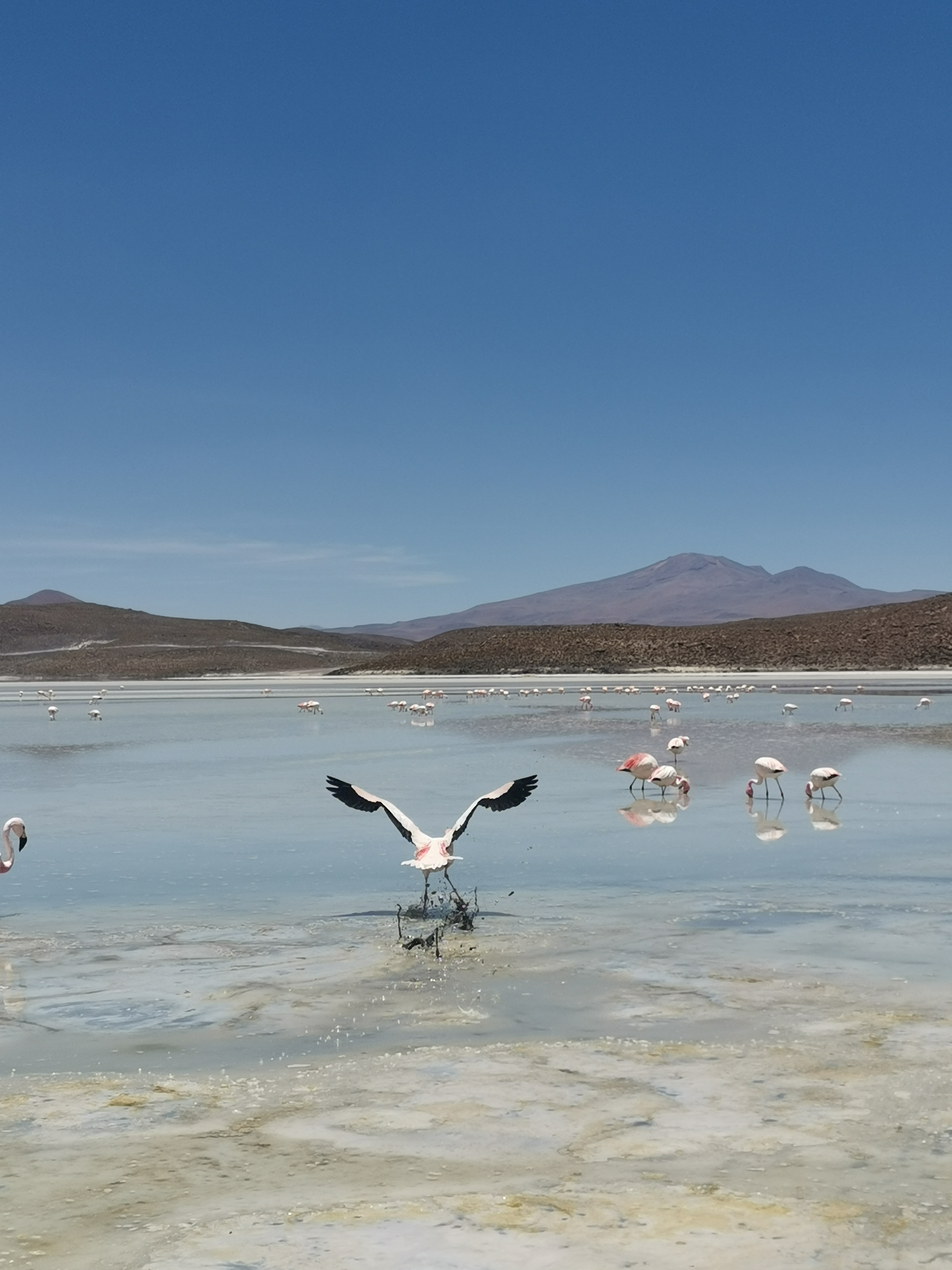
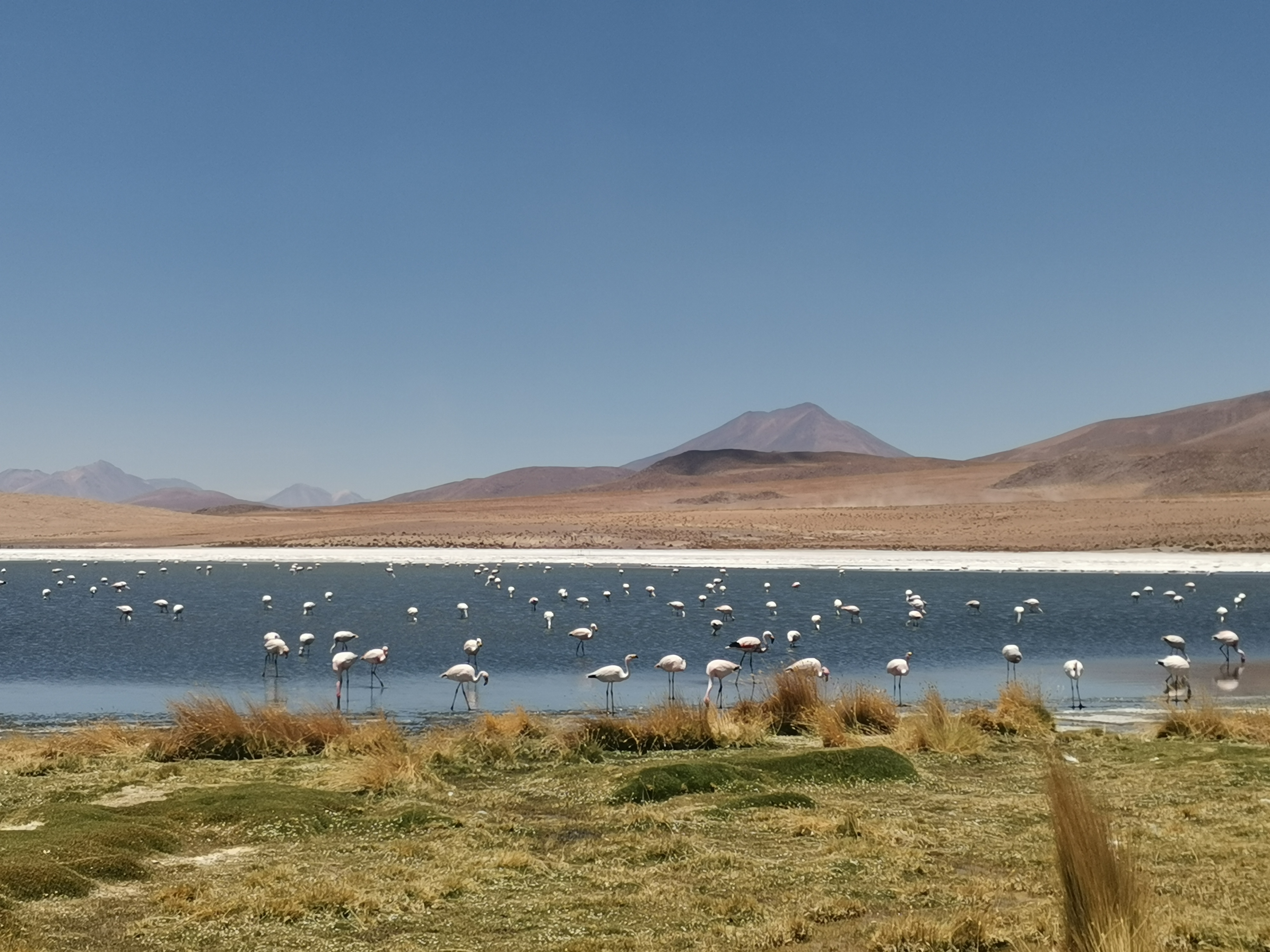
Although the flamingoes reside in the reserve in huge numbers before they migrate during the winter, most other wildlife in the park is only spotted sporadically. We stumbled across a herd of llamas, who had just been fed, but were intrigued to see if we had anything more for their breakfast. If you are lucky, and eagle-eyed, you might even spot a viscachaViscaha
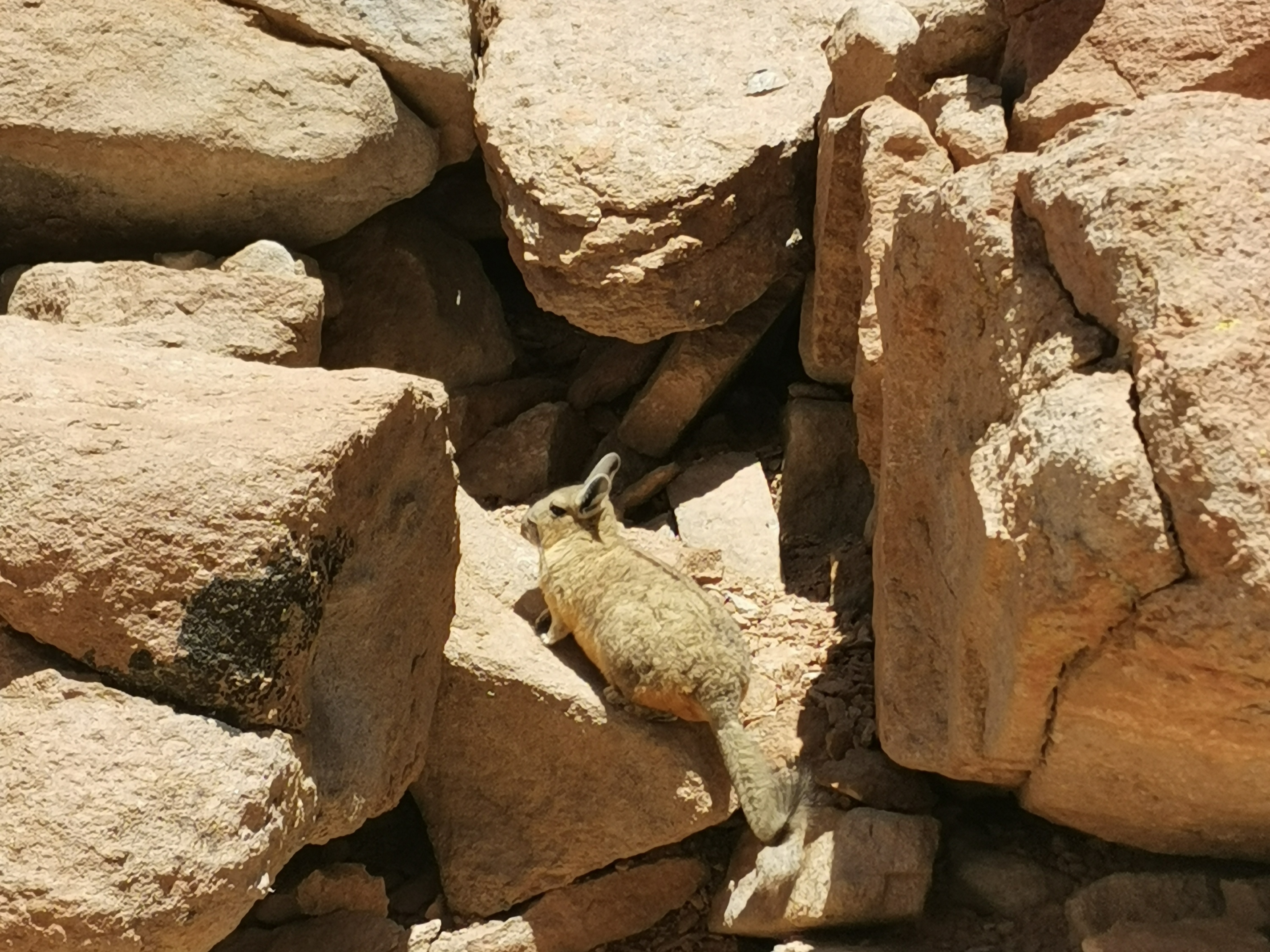 Viscahas are native to the Andes, and look like grey rabbits with long tails. We saw just a few of them during our month in Bolivia.- a rabbit-like rodent, although they are incredibly well camouflaged and notoriously skittish around people.
Viscahas are native to the Andes, and look like grey rabbits with long tails. We saw just a few of them during our month in Bolivia.- a rabbit-like rodent, although they are incredibly well camouflaged and notoriously skittish around people.
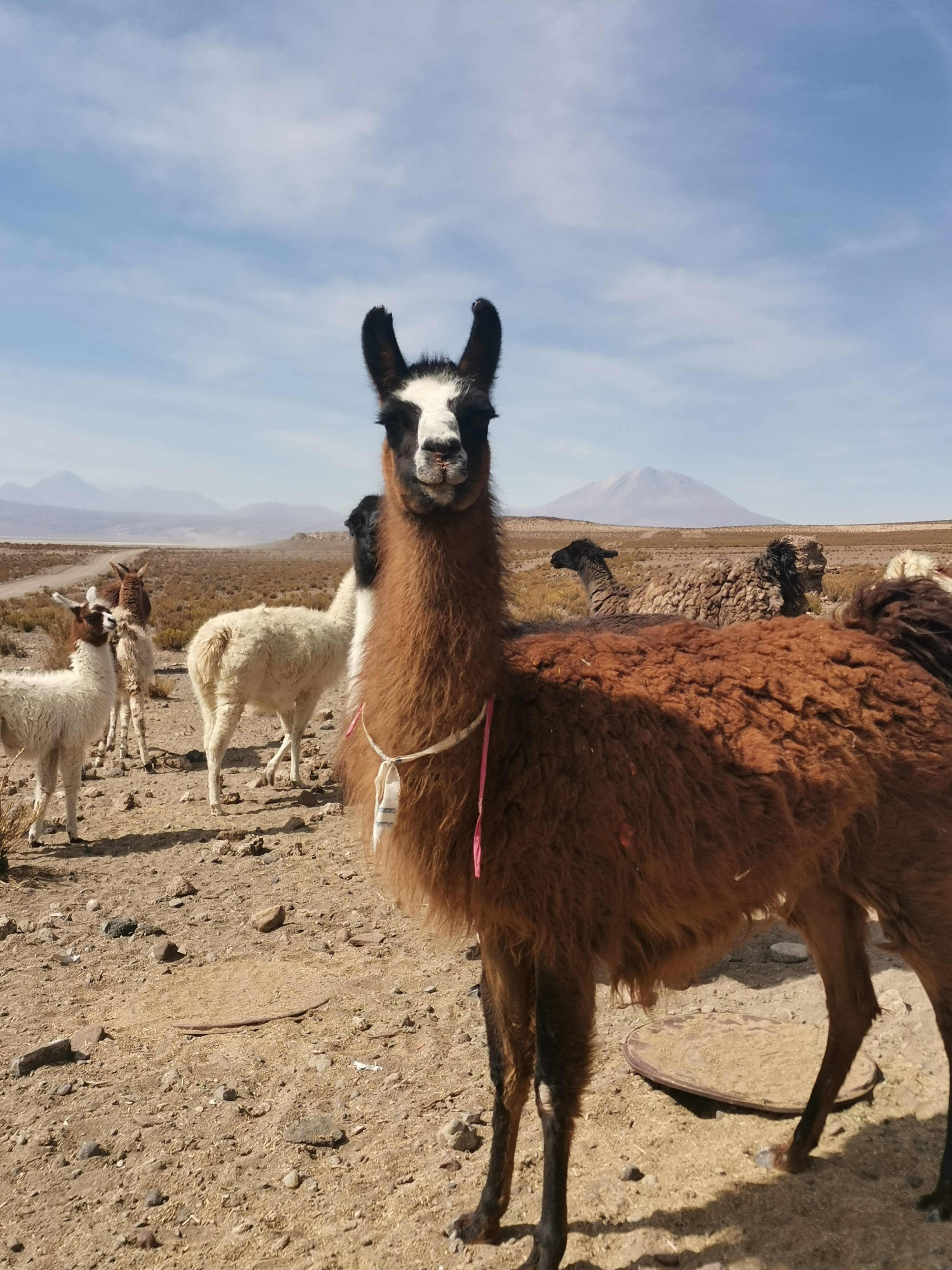
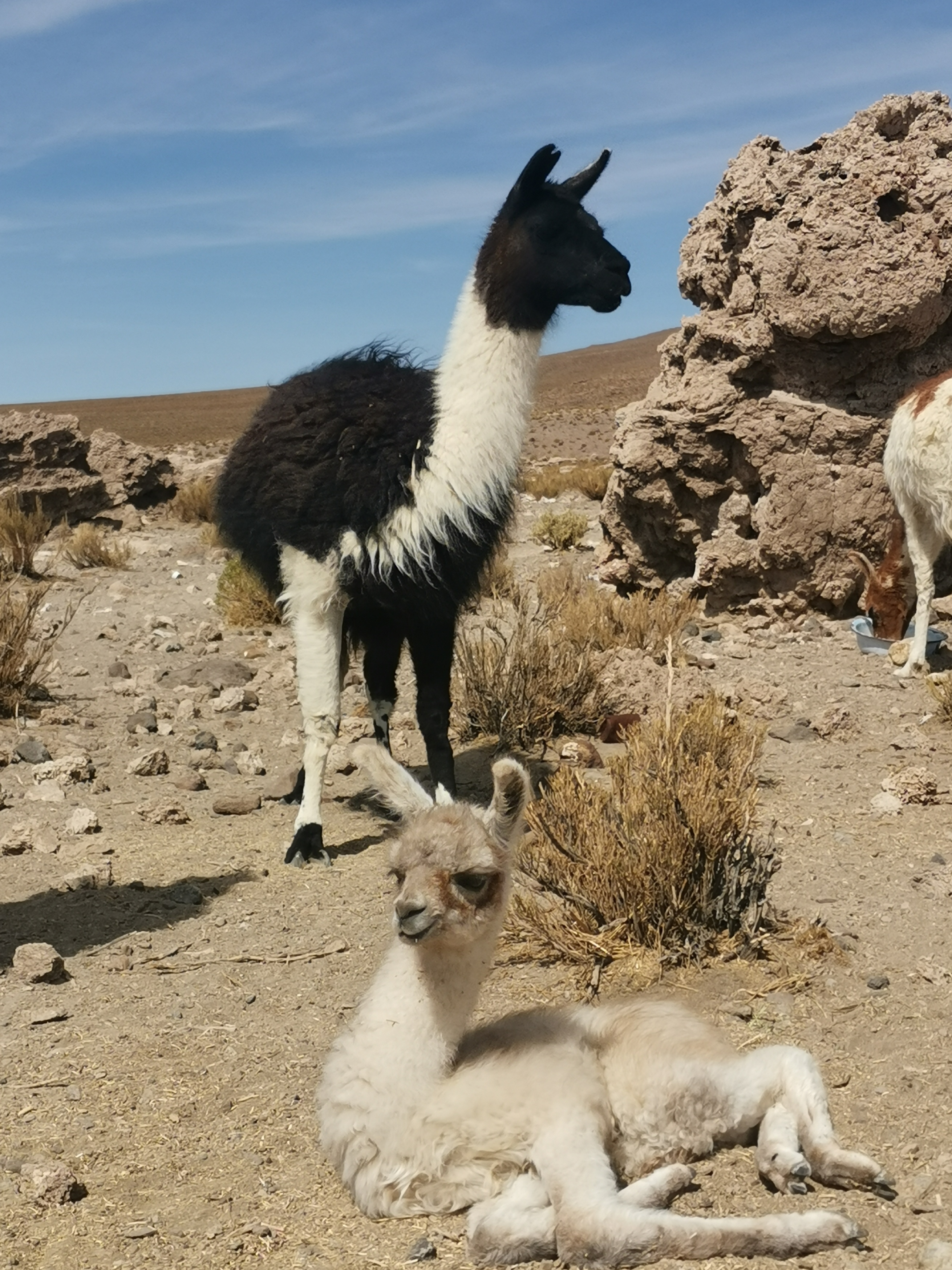
Day 3
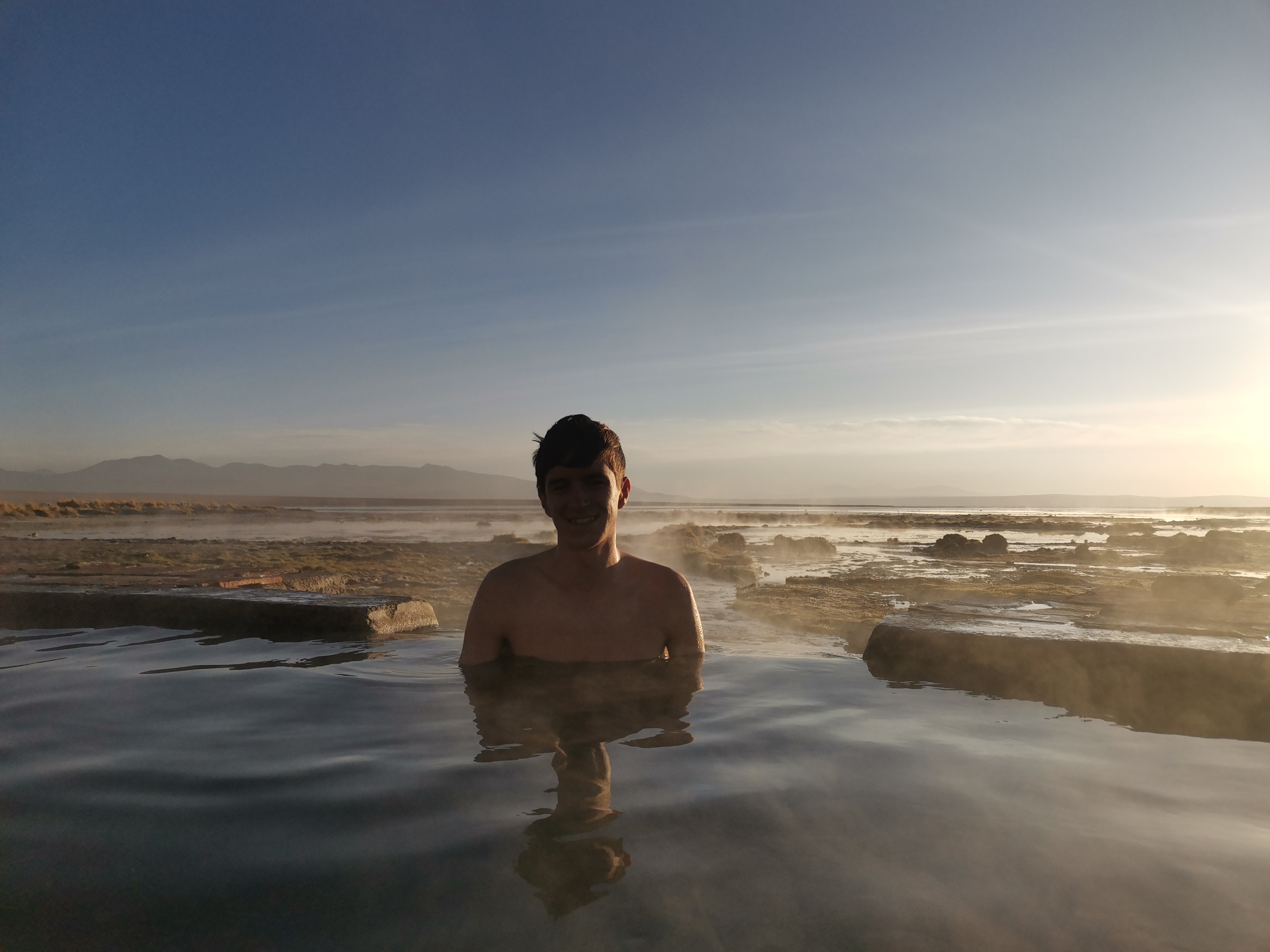
Geysers & Hot Springs
Although we had been up at the crack of dawn for the past two days, the third and final day of the tour began with an even earlier start, leaving the hotel when the stars were still clearly visible against the unpolluted night sky. We had forgotten that we were in the Andes at over 5,000m above sea level, and weren't prepared for the near-zero degree temperatures of the early morning. With the heating cranked all the way up, we drove in the 4x4 for an hour to reach sol de manaña ('morning sun'), a set of volcanic geysers. Here, huge plumes of sulfurous gas drift up from the boiling lava pools, mixing with water vapour as they rise through cracks in the Earth’s rocky crust. These geysers are at their most magnificent during the very early morning, when the cold air temperature causes more condensation of vapours in the air. Although they release a notable amount of sulfur, we were able to get within a metre of the geysers, where we could truly appreciate the sheer size of them. The scene was otherworldly, with the faint purple glow of dawn and the smouldering gas plumes rising high into the sky, it wasn't the first time in Bolivia that we felt like we were in a Sci-Fi film.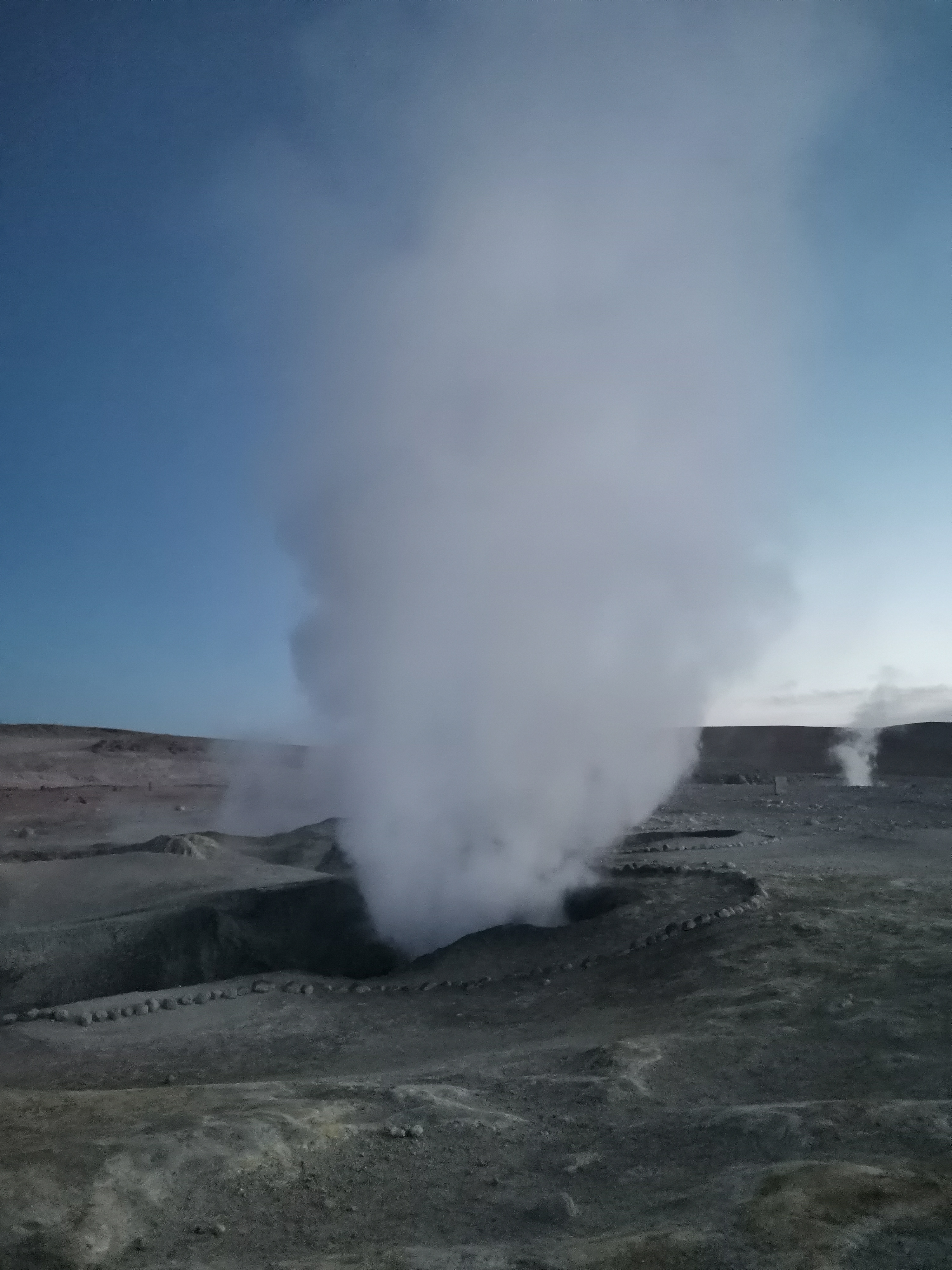
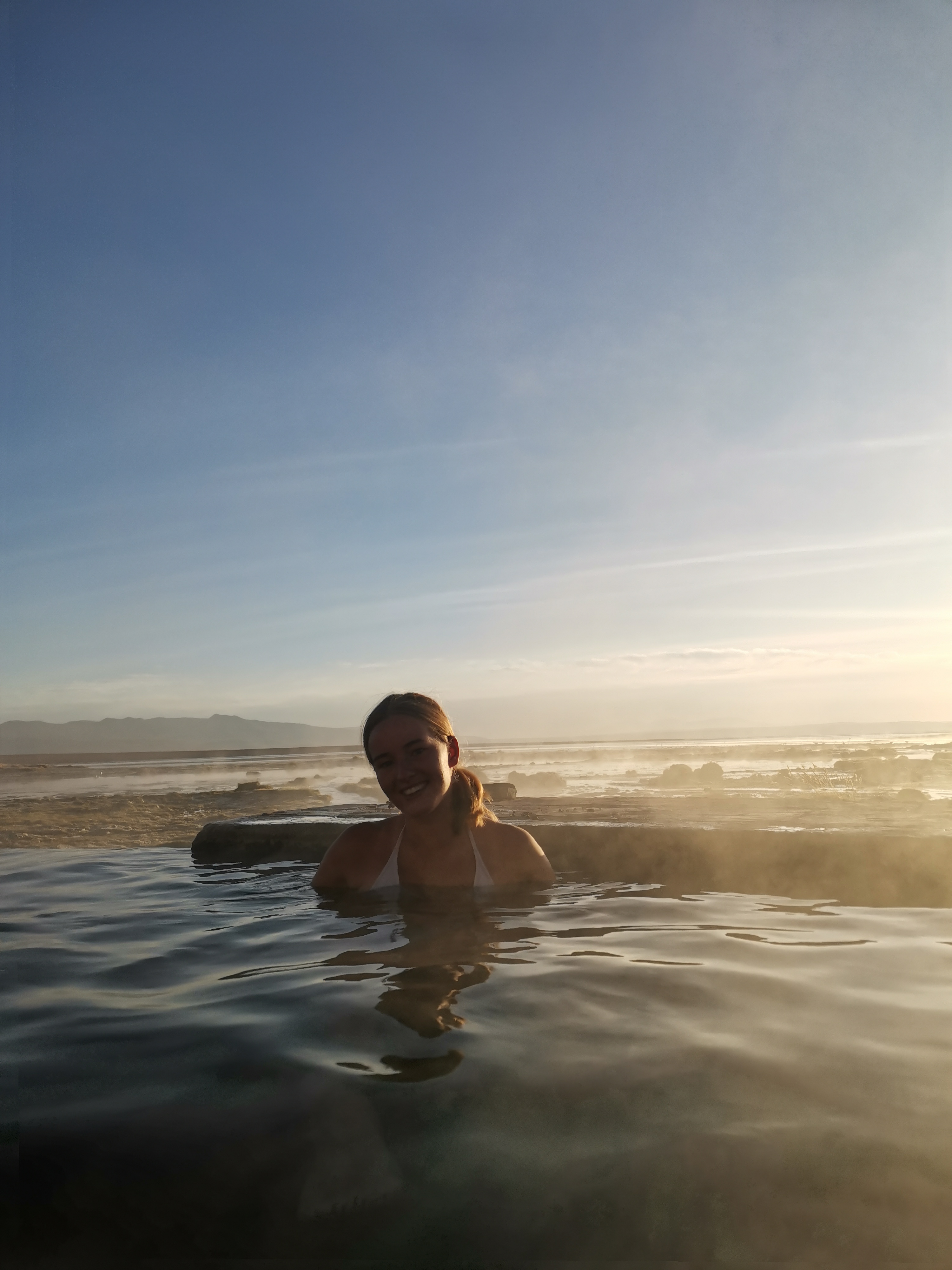
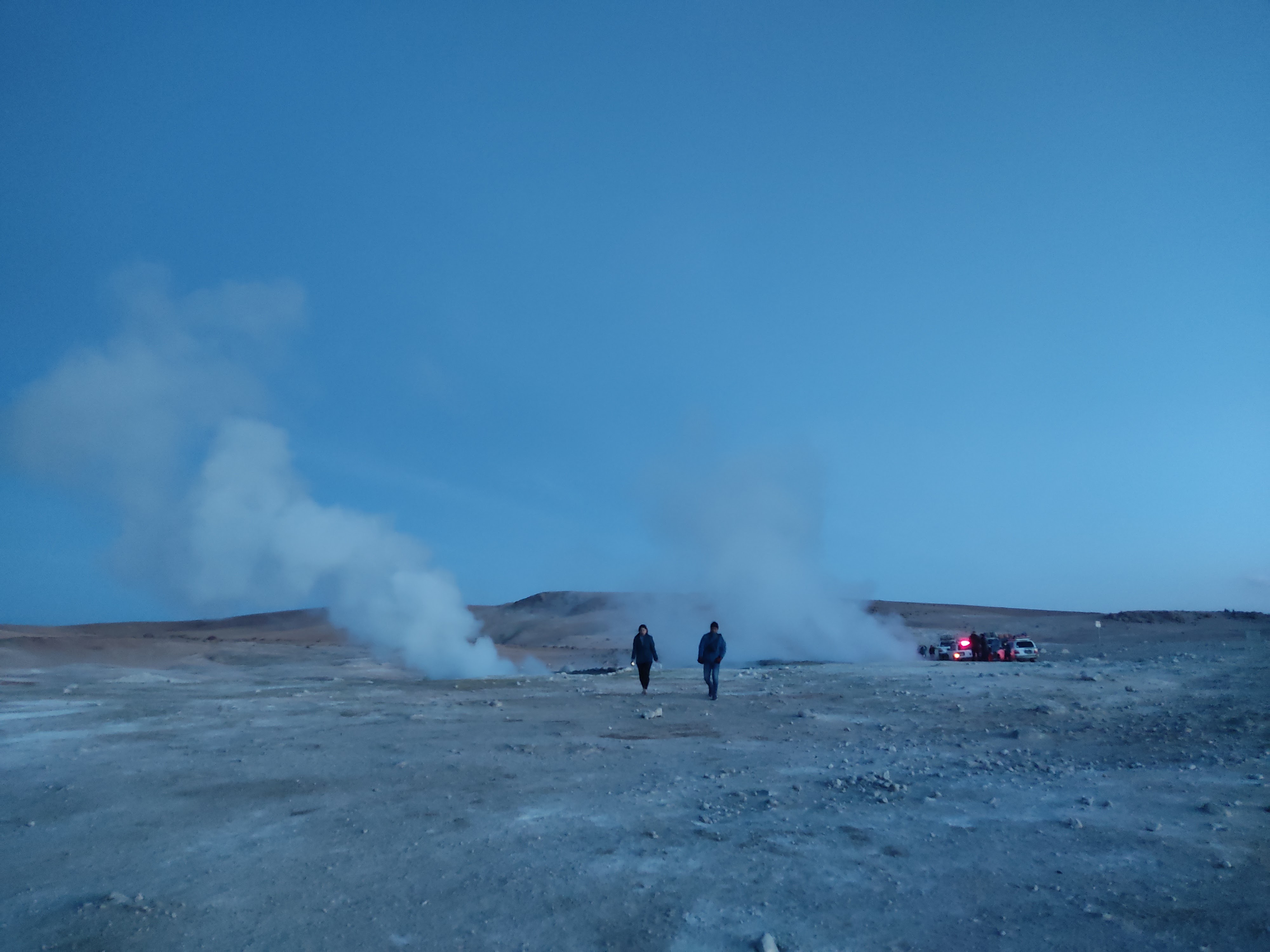
As the cold started to get to us, we squashed back into the 4x4. Fortunately, the volcanic activity in this incredible region provides the perfect counter for the freezing cold morning conditions in the form of the Polques hot spring. After a mad dash through the freezing air from the changing rooms, wearing just our swimming costumes, we hopped in the pools and instantly felt the chills leave our bodies. The hot, mineral-rich waters are supposed to be excellent at relieving muscular pains, and sitting in the steaming pool overlooking the vast lagoon and the mountainous on the horizon was an incredibly relaxing and re-energising experience. It was an excellent last-image of Bolivia, before the sprint back to the cold changing rooms and the drive to the Chilean border.
The Chilean Border
The tour groups are reshuffled at the hot-springs, with people swapping cars depending on if they are heading back to Uyuni, or continuing on to Chile. The drive to the border was thankfully one of the shortest of the whole tour, and after seeing the Chilean mountains in the distance for the past 2 days, we were finally at the official crossing point.Leaving Bolivia was as easy as entering, and despite the queue of tourists pouring out of the many 4x4s, we were stamped-out in no time. We were then directed to shuttle buses destined for San Pedro, which departed whenever they were full/when the driver felt like it, rather than sticking to the schedule on the tickets.
After a short drive through no-mans land, we arrived to the Chilean border, which was significantly more rigourous than the Bolivian one. After everyone on the bus had declared that they had no plants, (including fresh or dried/canned fruits and vegetables, nuts, seeds, or fresh herbs), live animals, or tissue samples in their luggage, the bags were unloaded from the bus and subject to airport-style security checks. Once the border police were satisfied with the luggage, we set off again, and the bumpy desert road immediately turned into smooth, wide tarmac. Thankful that we didn't have to endure any more cramped and bumpy rides in the back of the 4x4, but also slightly sad to say goodbye to Bolivia, we raced over the rolling hills to arrive in the town of San Pedro de Atacama, where an entirely different adventure began.
Overview
Although, technically, most of the 3-day Salar de Uyuni tour takes place outside the famous salt flats, the diverse scenery present in this corner of Bolivia is absolutely incredible. That being said, we do enjoy experiencing sites we have got to ourselves, rather than as part of a tour group. As the Salar de Uyuni is the most popular tour in Bolivia, there were so many 4x4s all driving to the same destinations only for the tourists to hop out to get some pictures before continuing again. This, coupled with the long and somewhat tedious journeys between the highlights, means if we were to do it again we would just do the 1 day tour of the salt flats. Needless to say, the rare wildlife and picturesque landscapes were stunning and the tour did include an easy option to cross the border to Chile.Related Posts.
07th April 2024
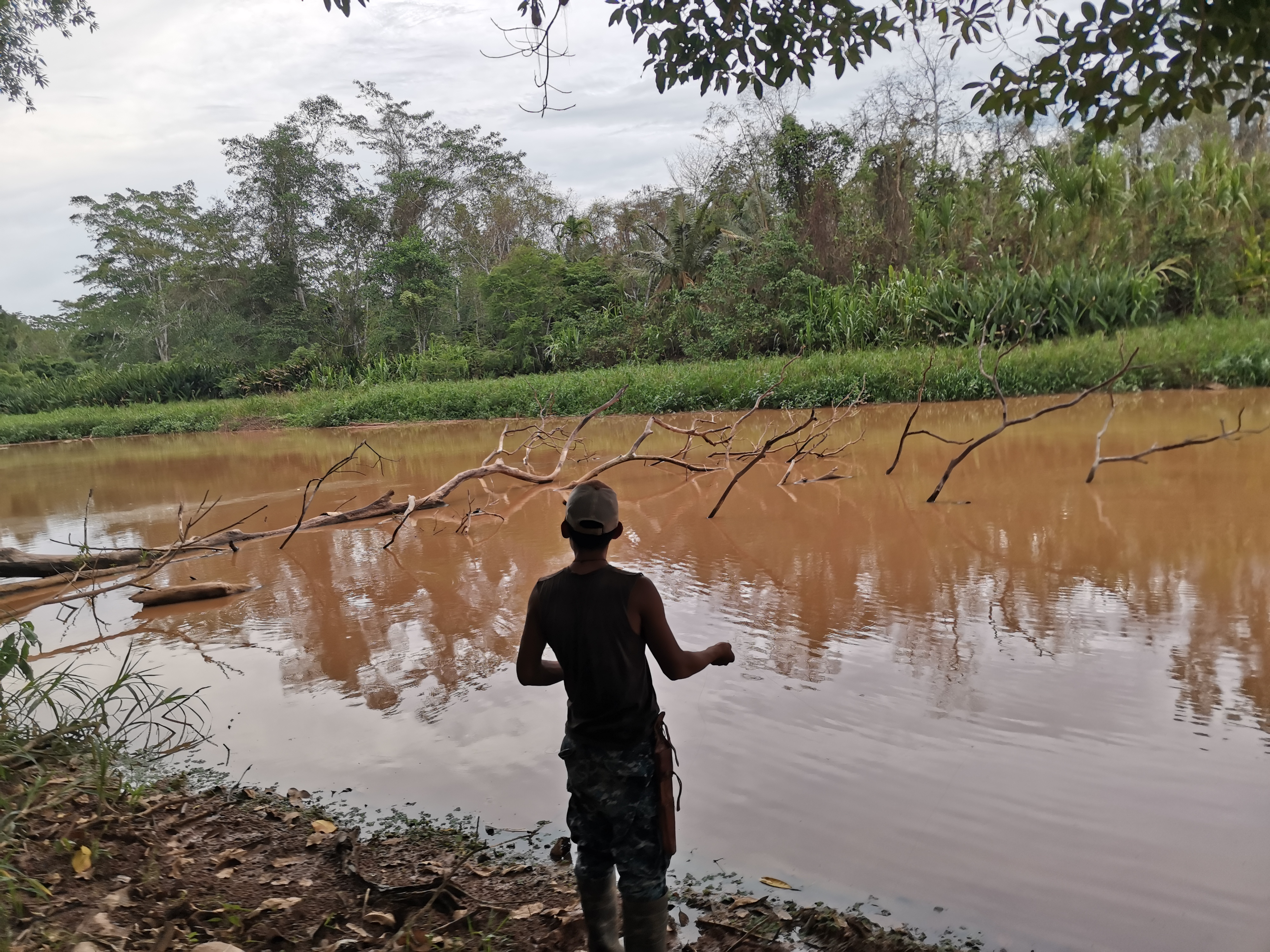
Although typically associated with Brazil, the Amazon rainforest actually spans 8 countries in...
24th March 2024
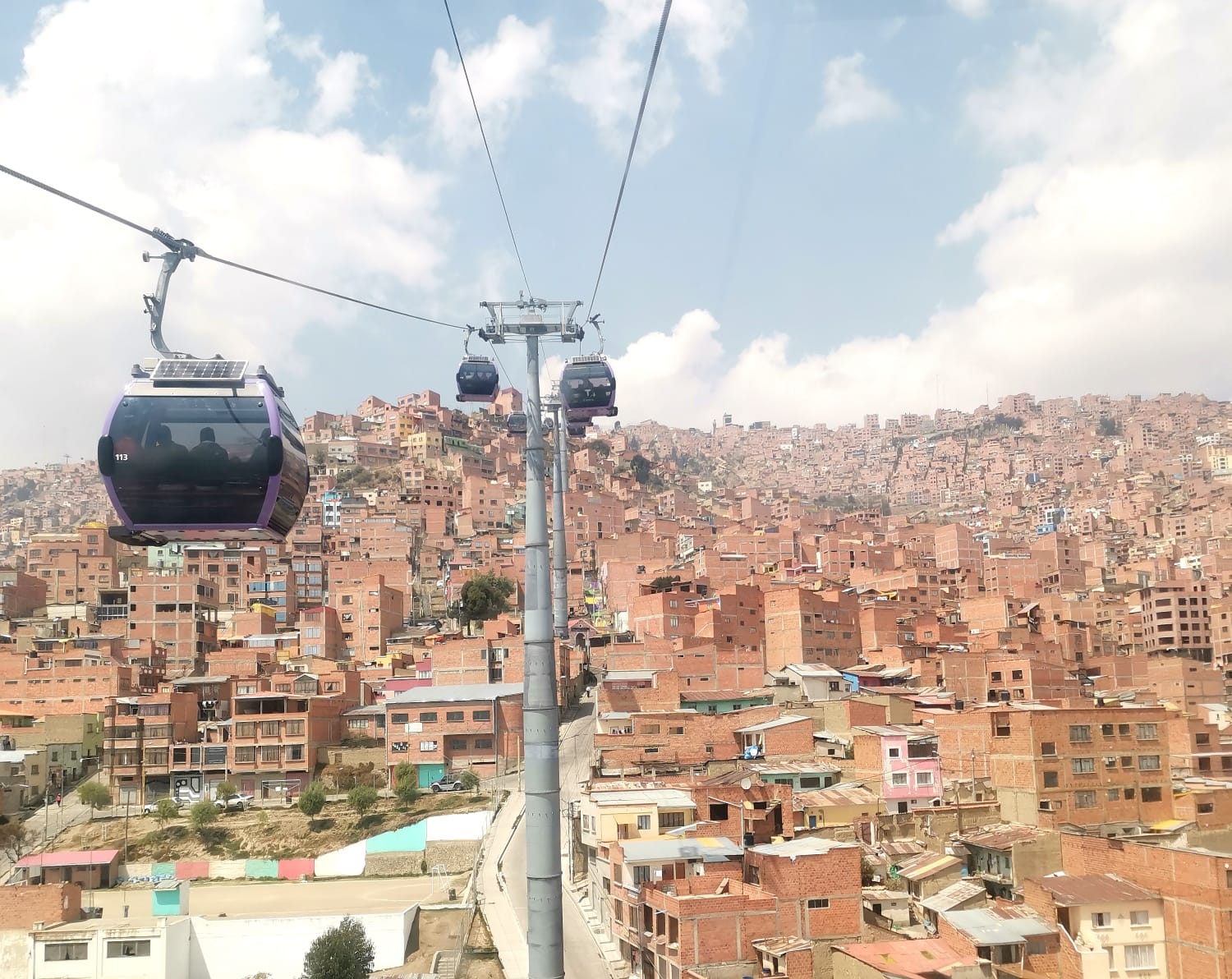
With so much character, La Paz is truly one of the most intriguing cities to visit in South America...
29th April 2024
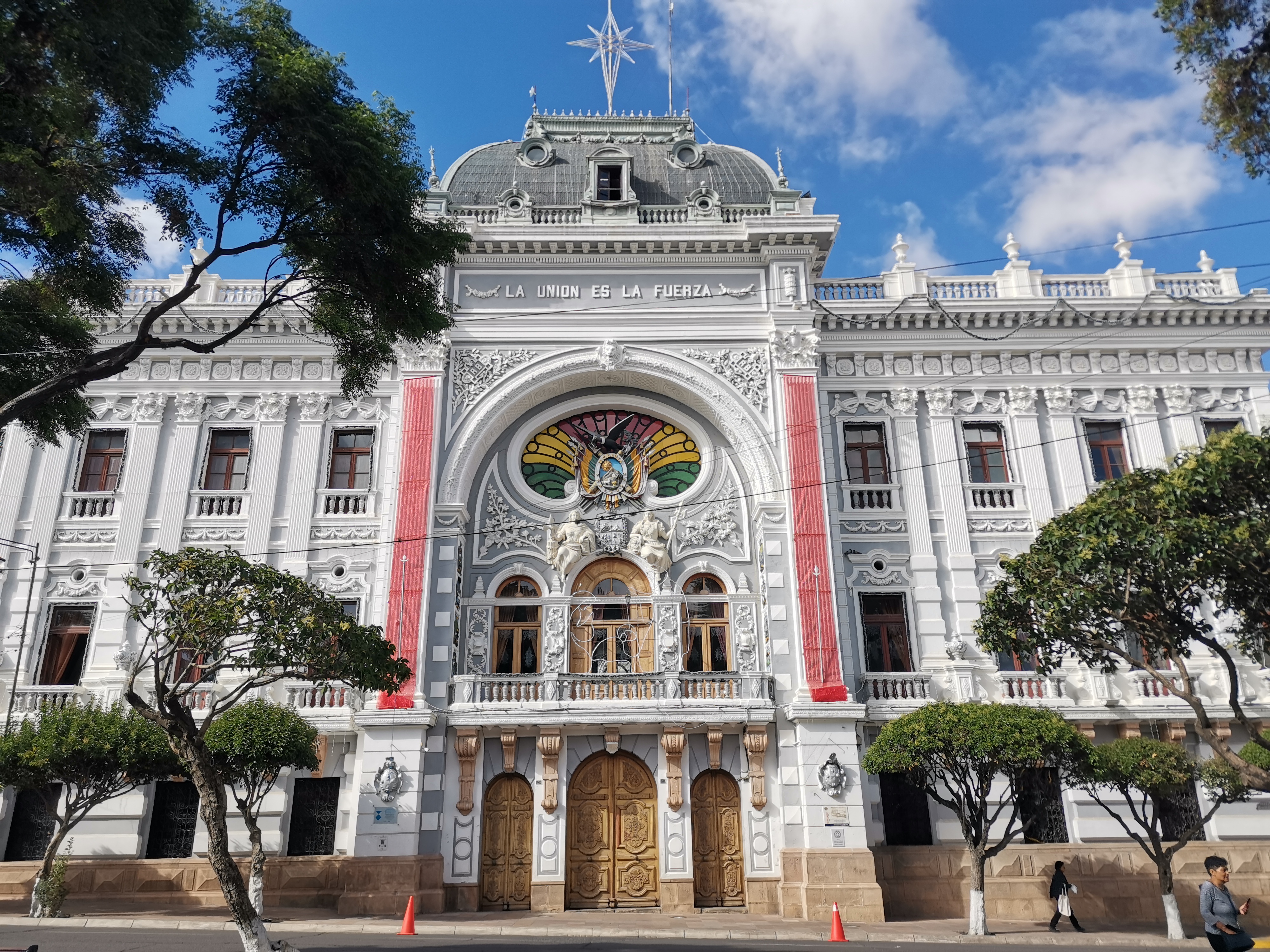
Sucre, also known as the White City, is not one of Bolivia's biggest or busiest cities. Despite this...
17th May 2024
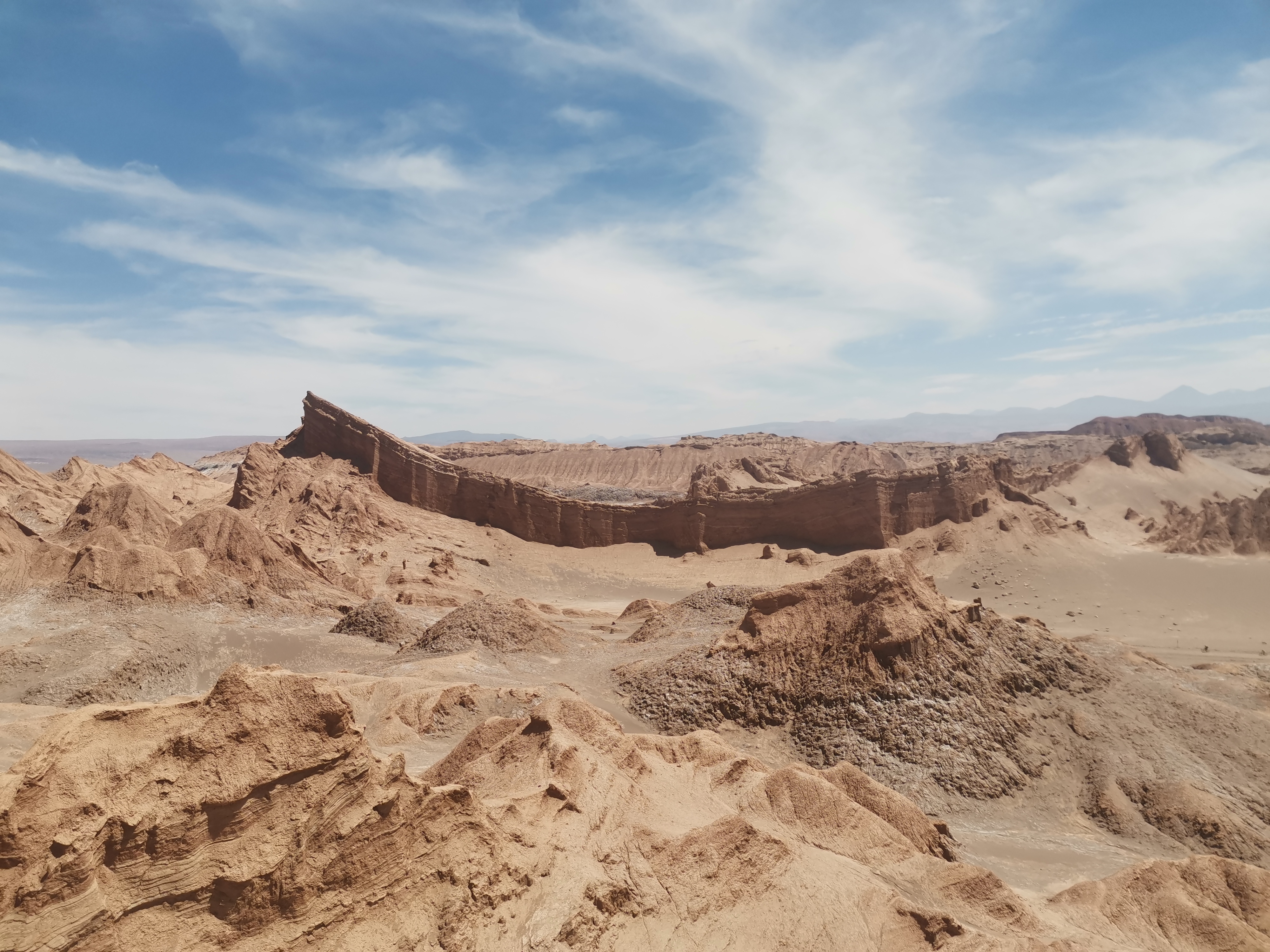
Surrounded by the hostile Atacama desert, San Pedro is a quaint and welcoming oasis, albeit full of tour...
